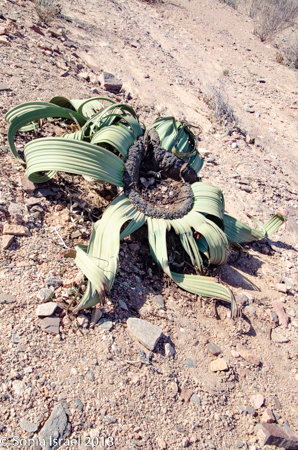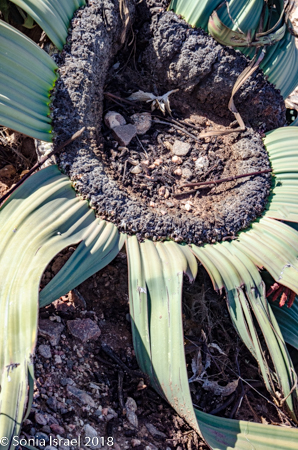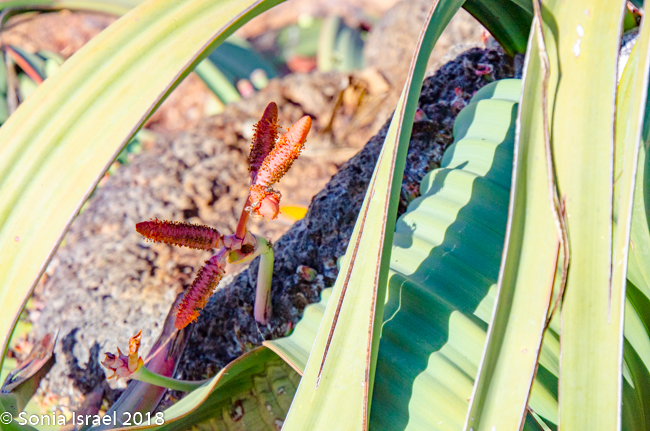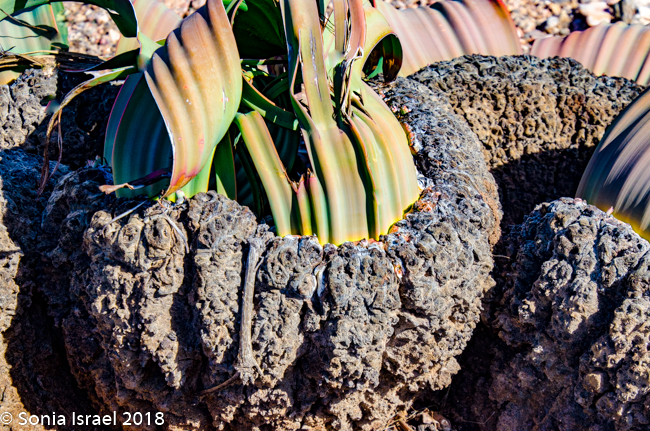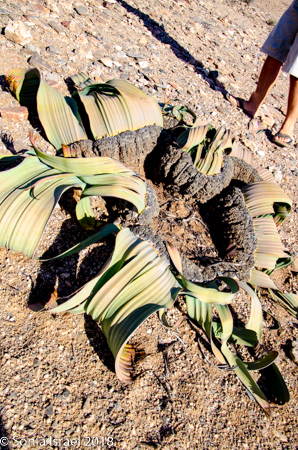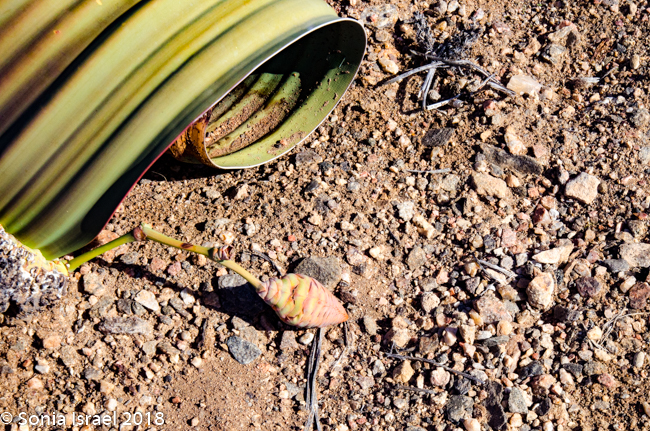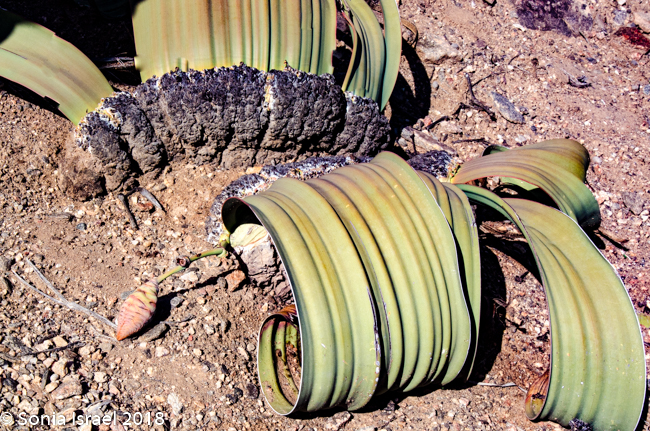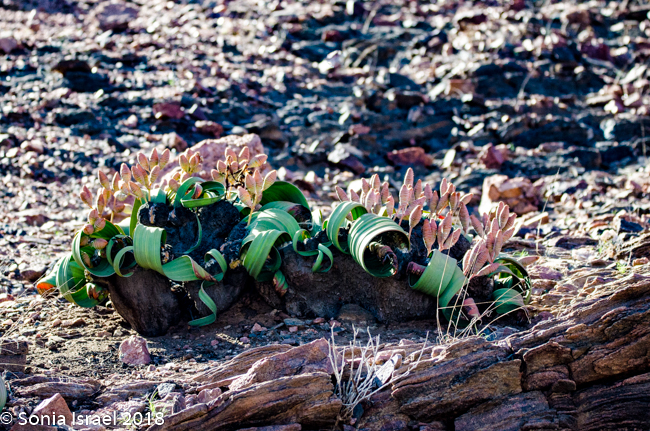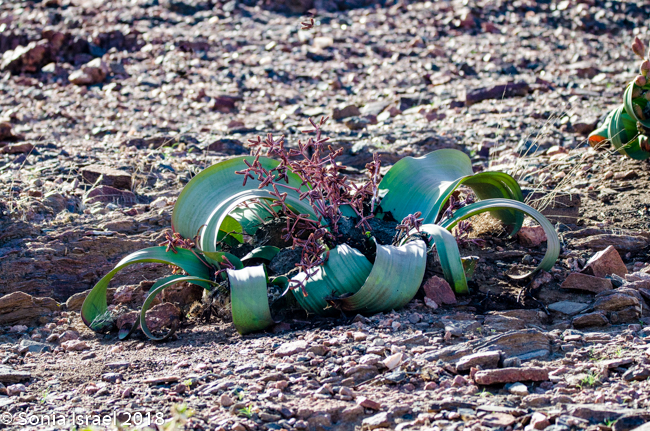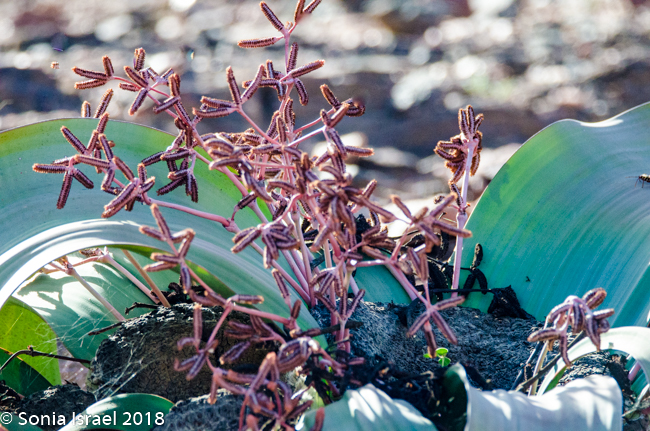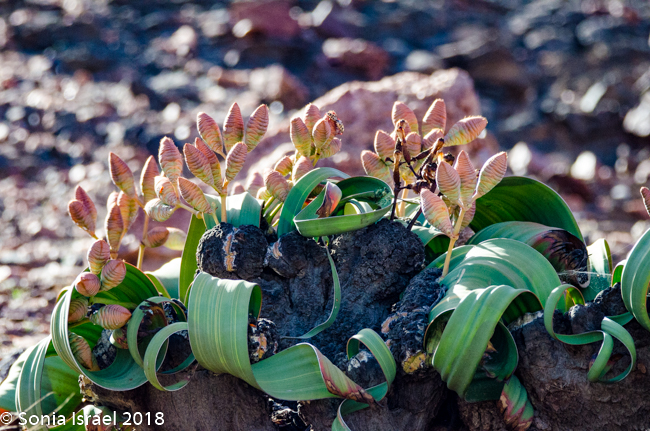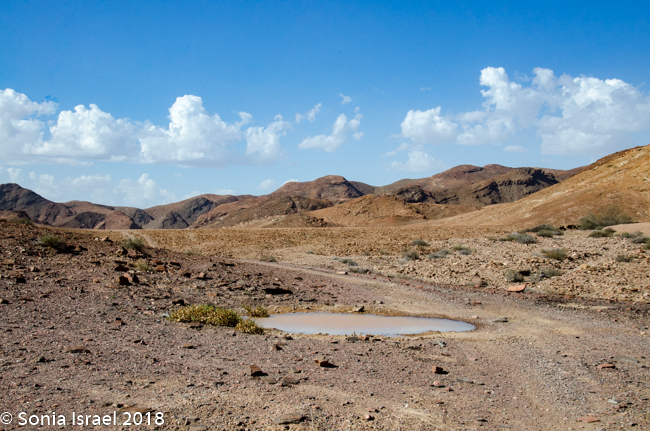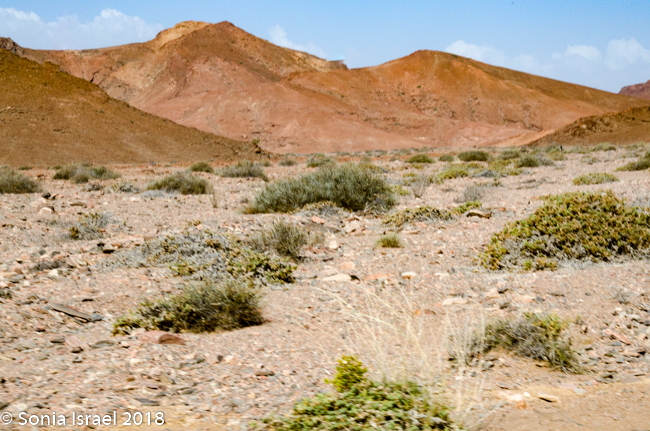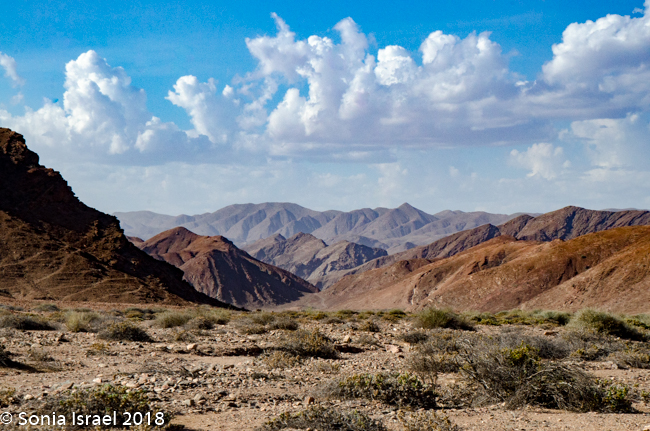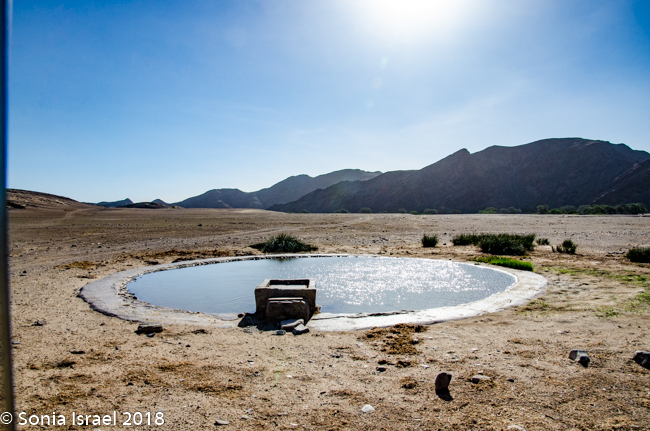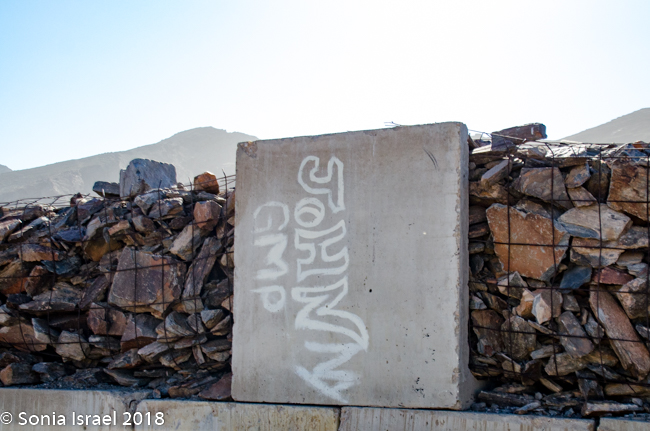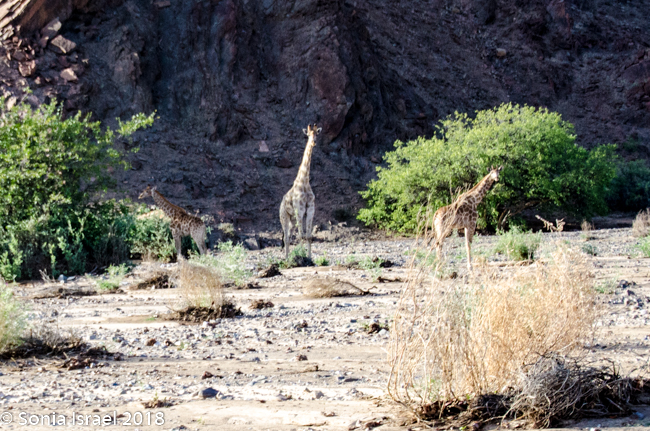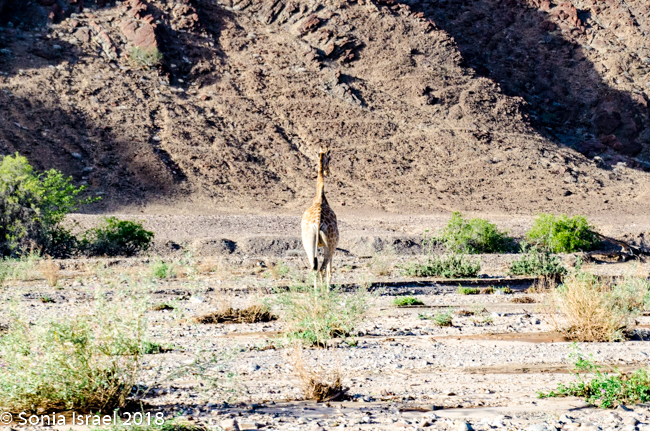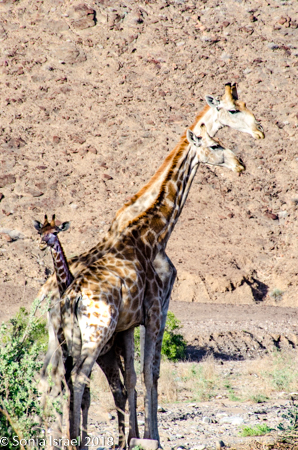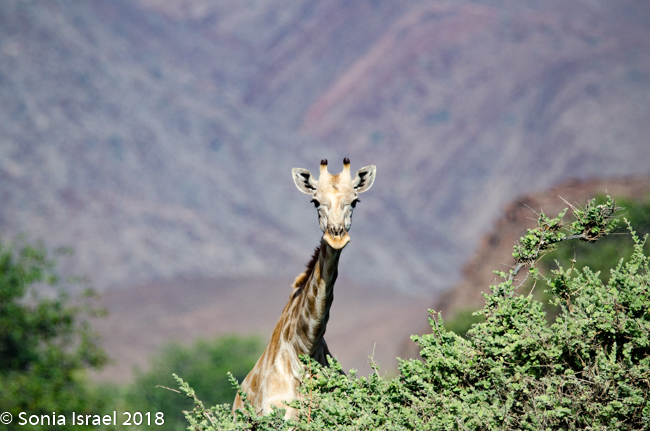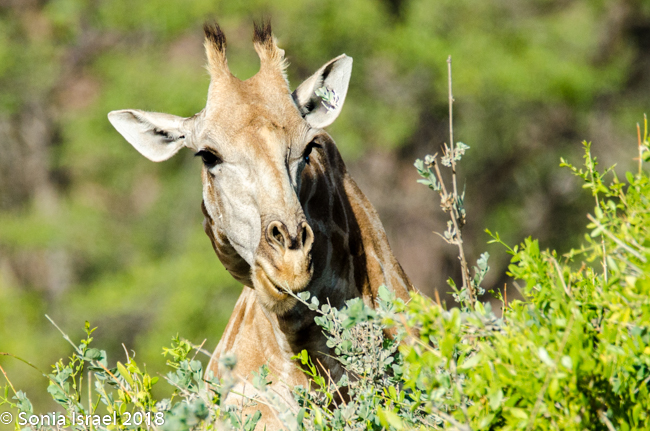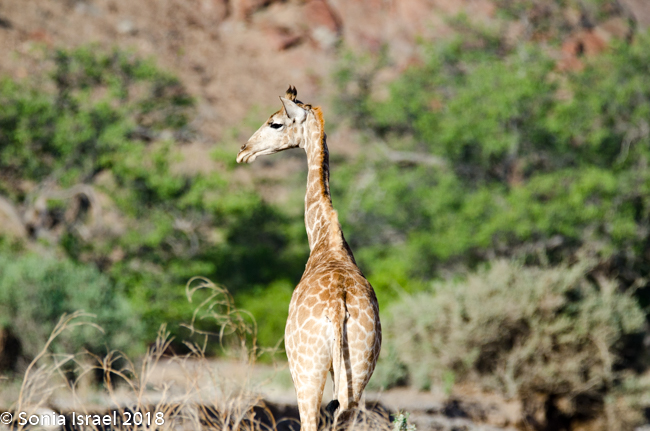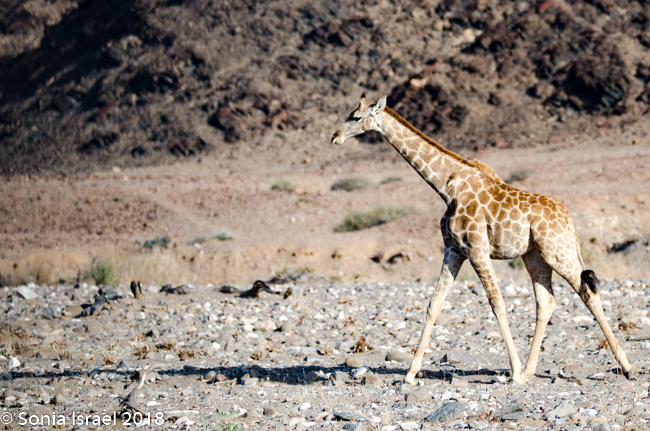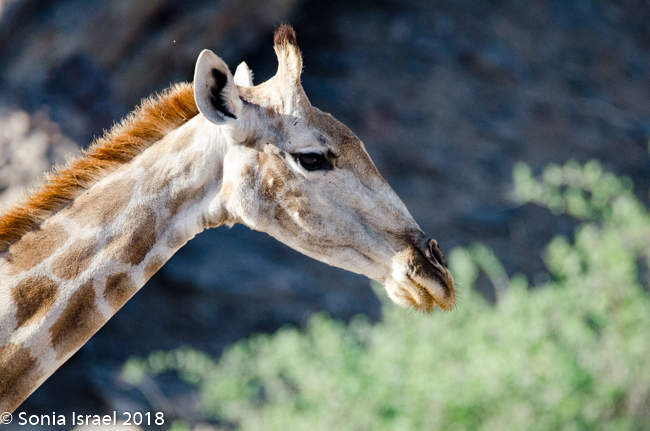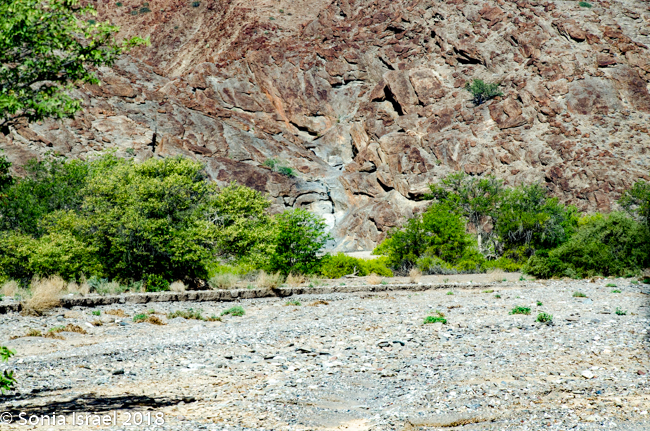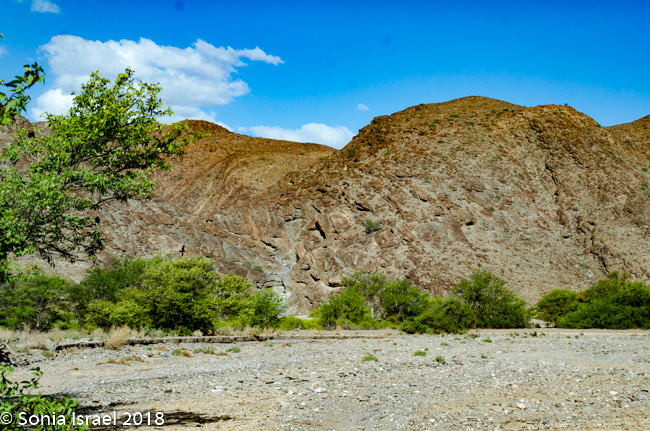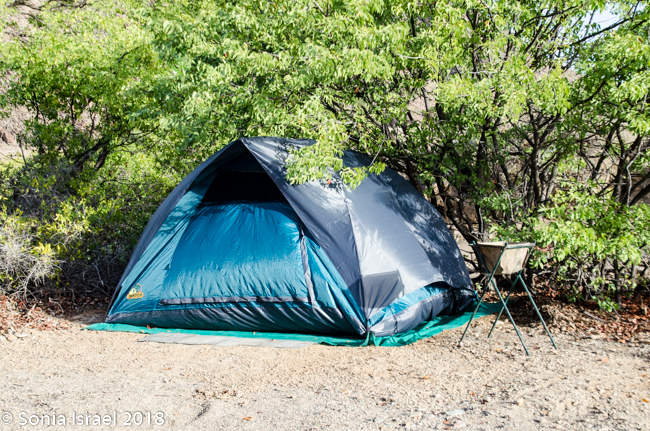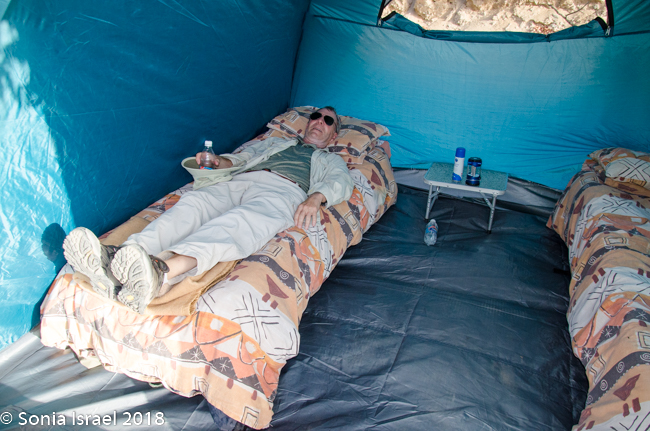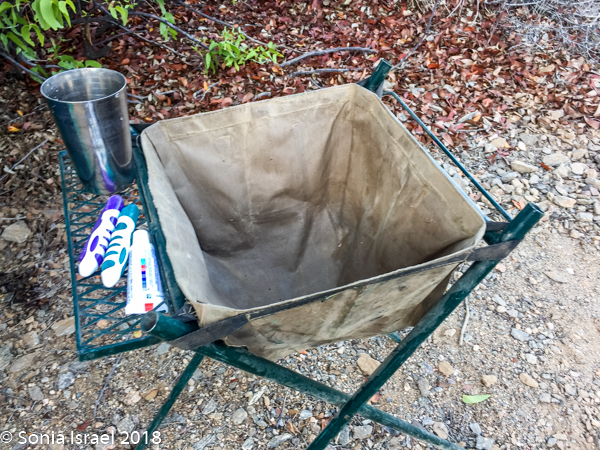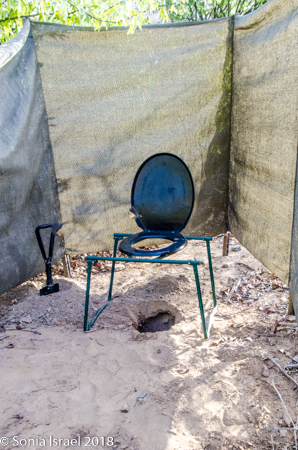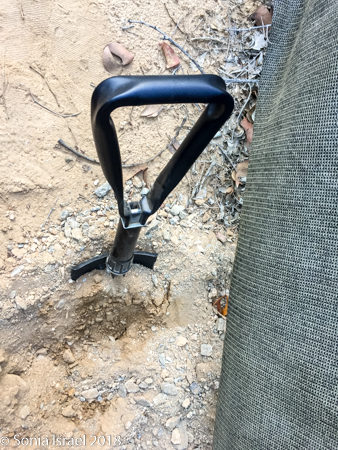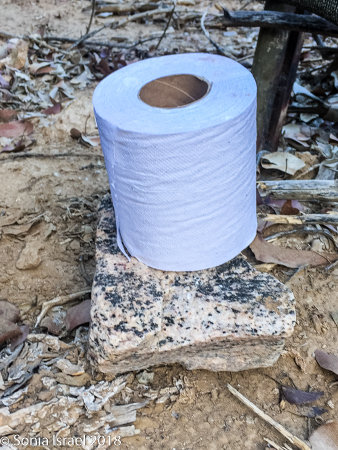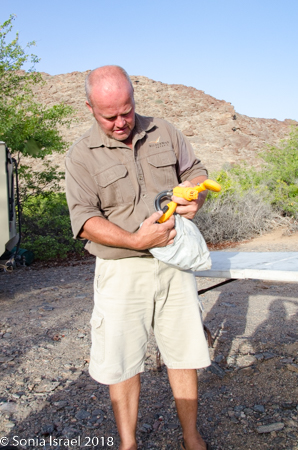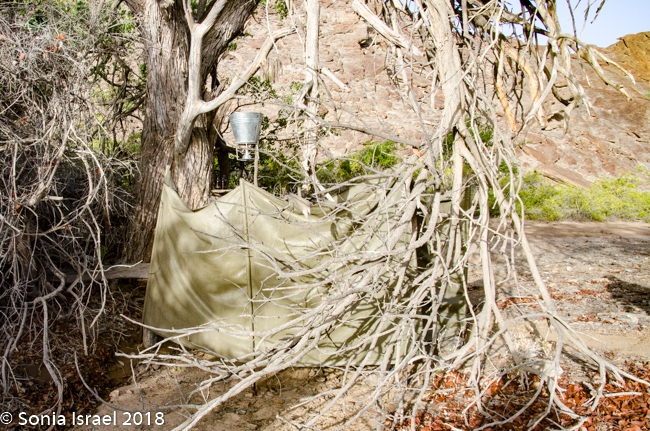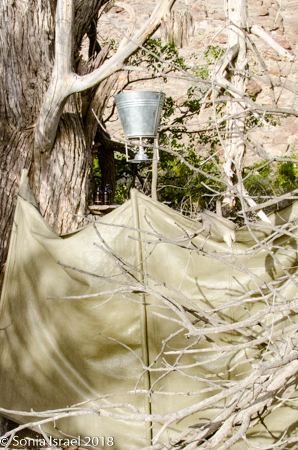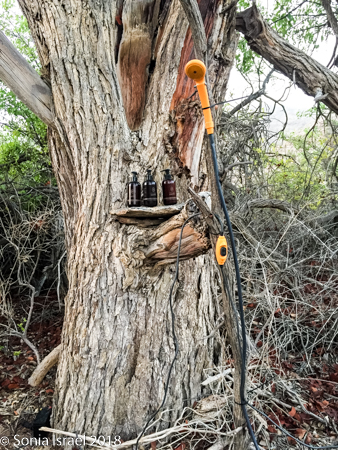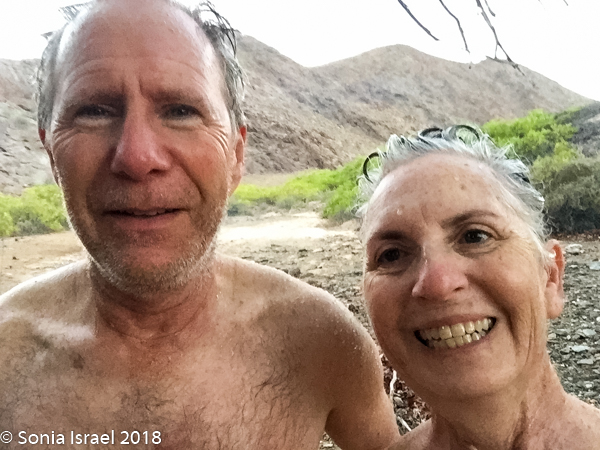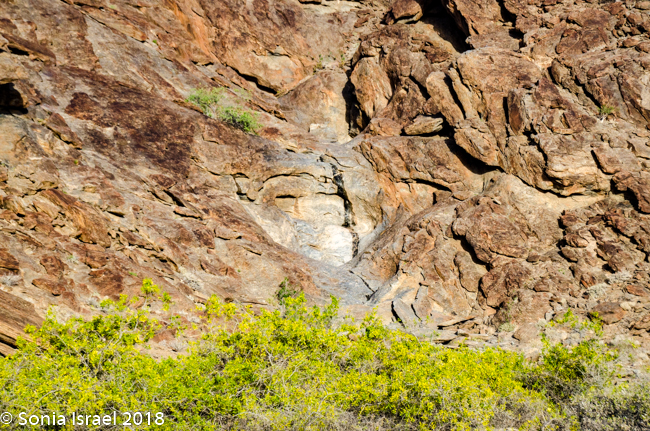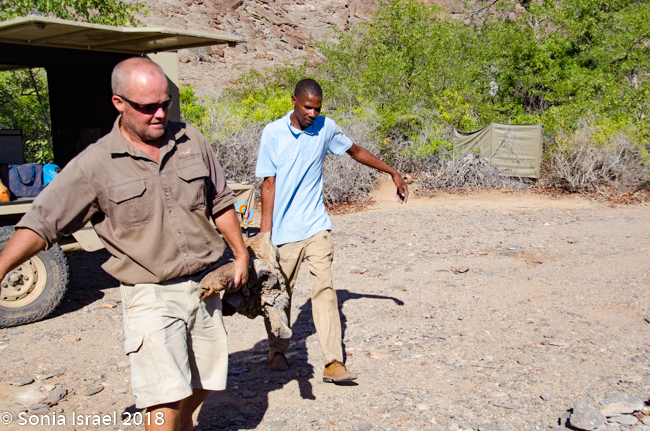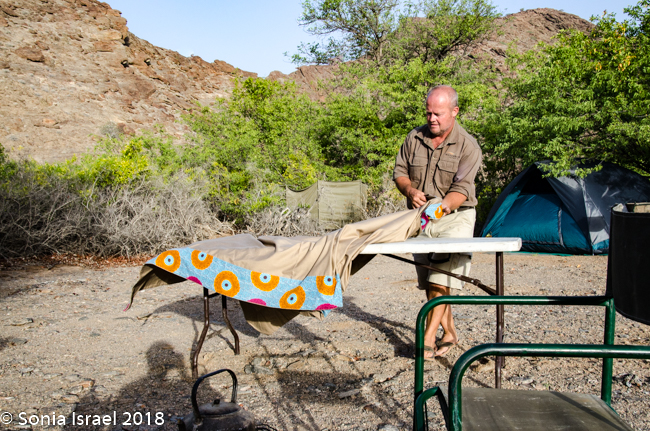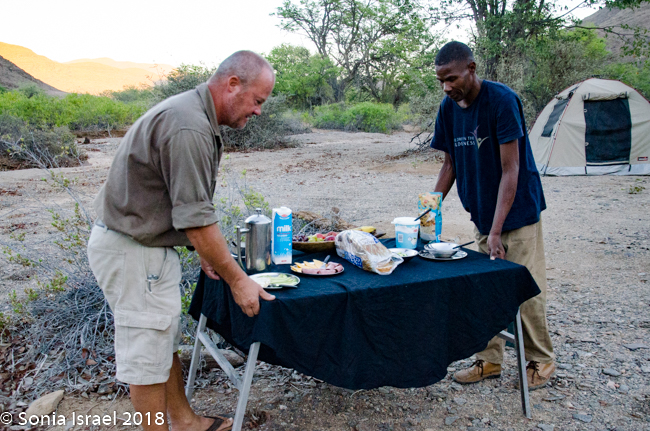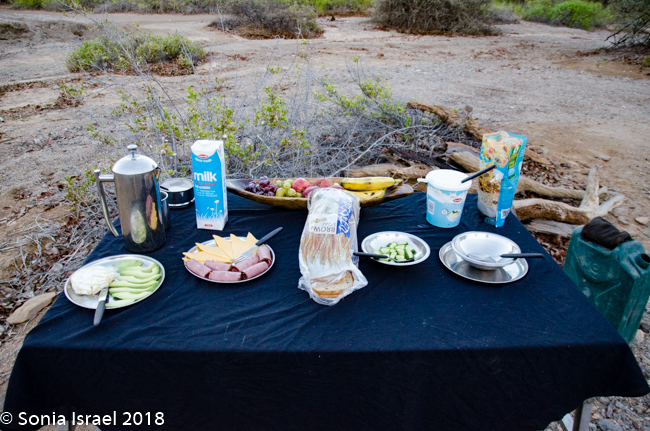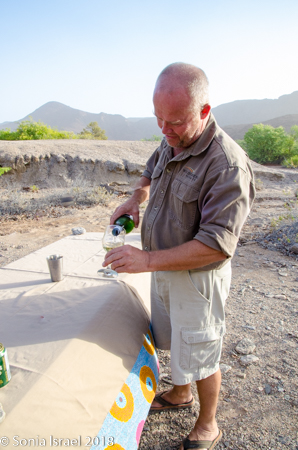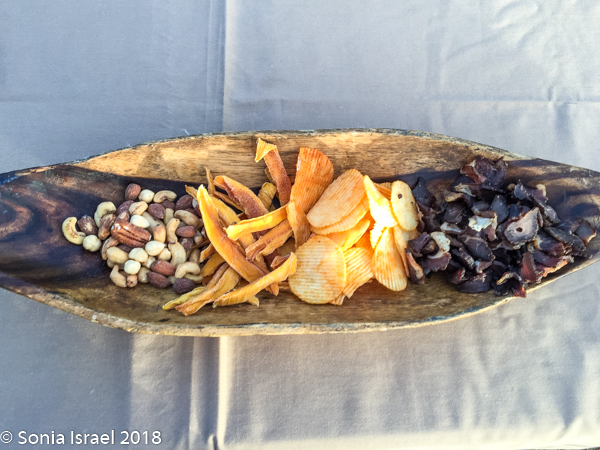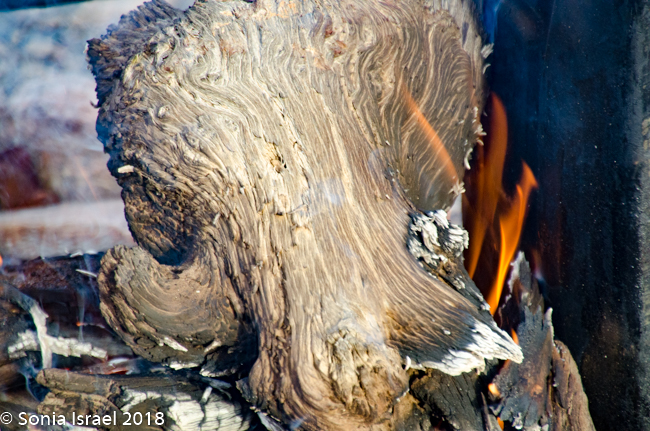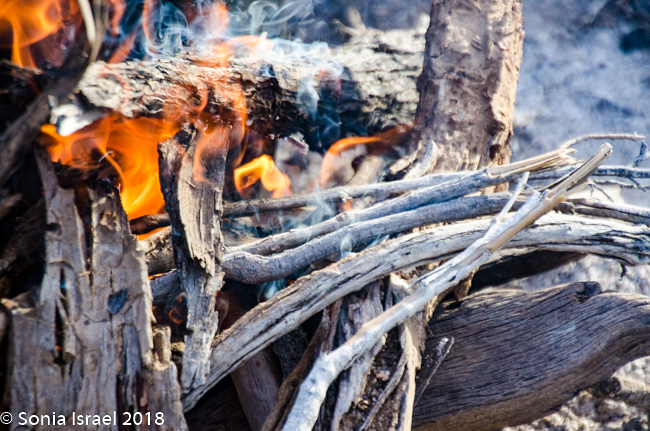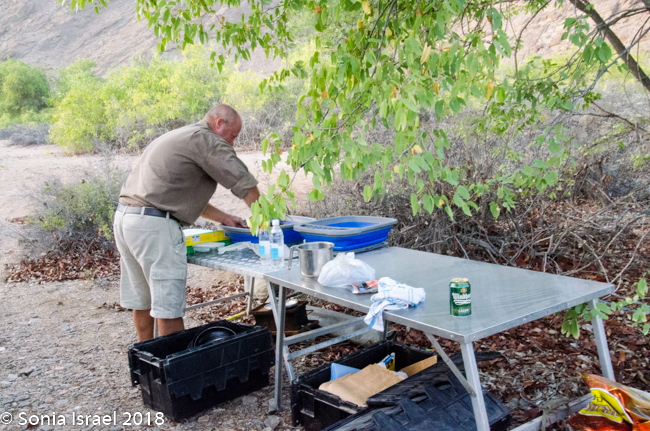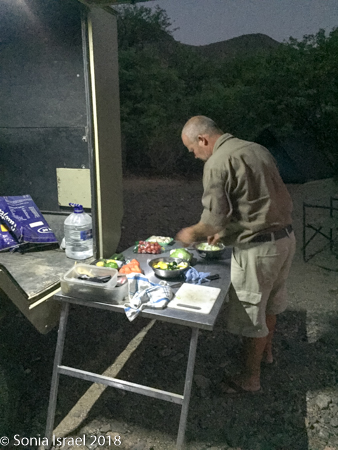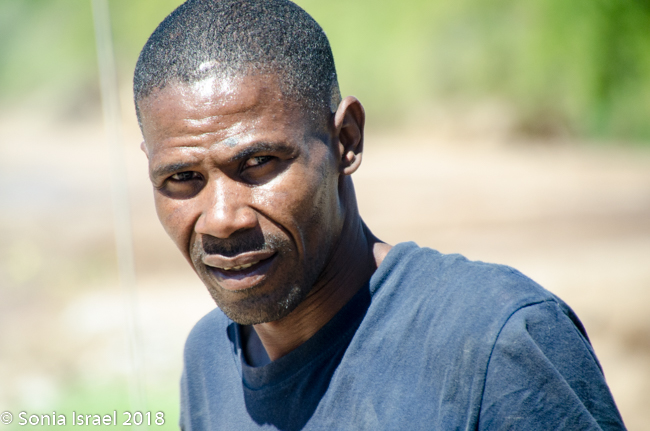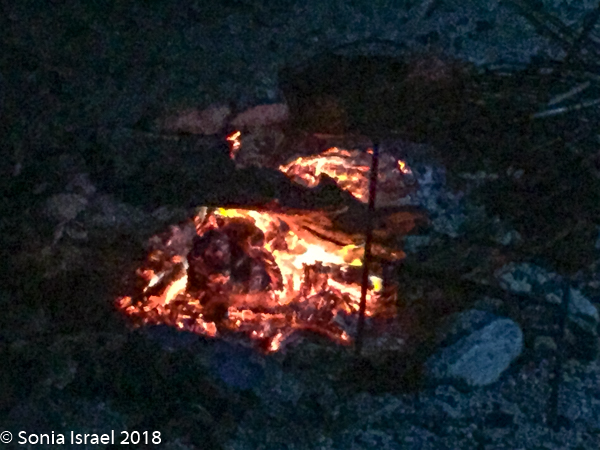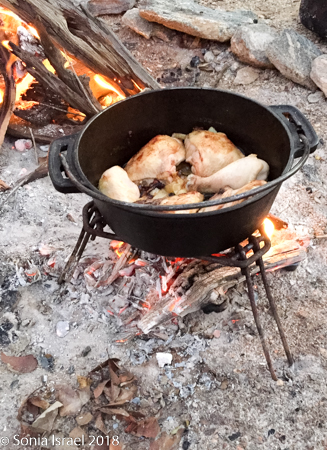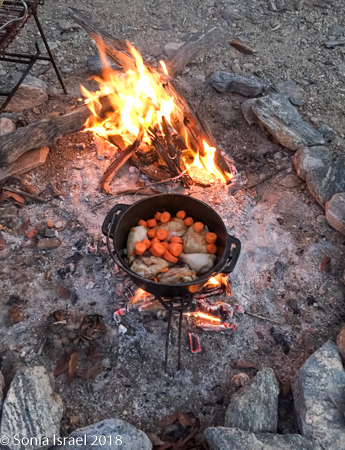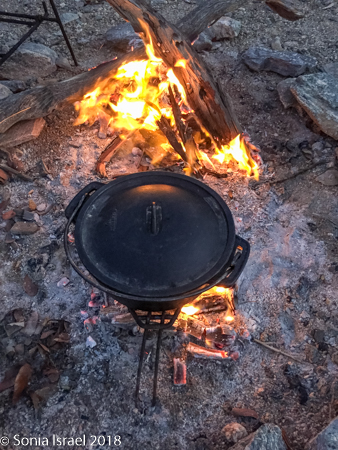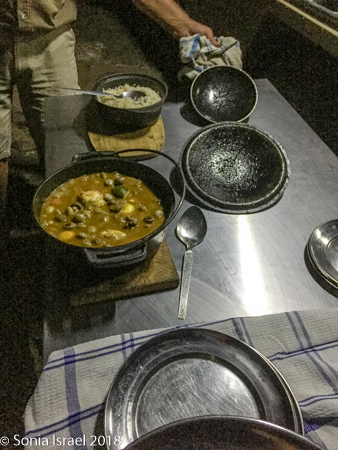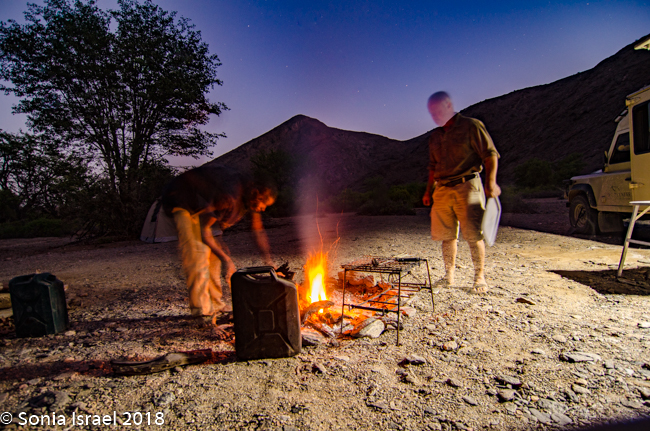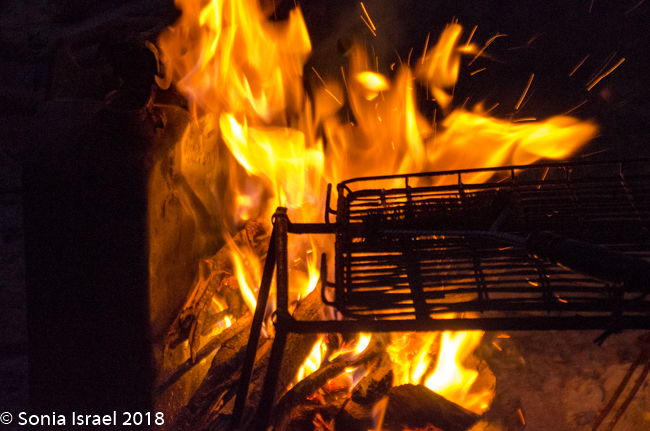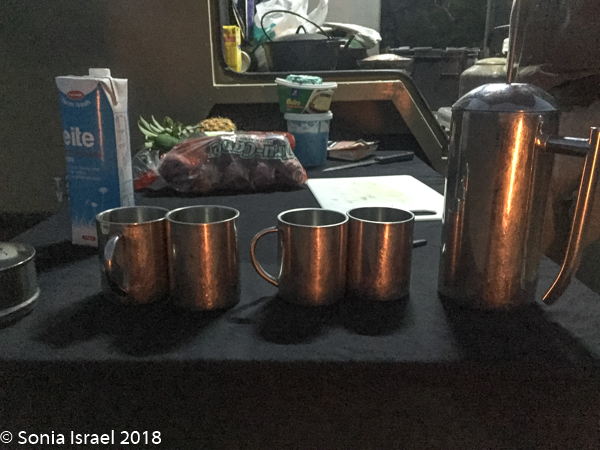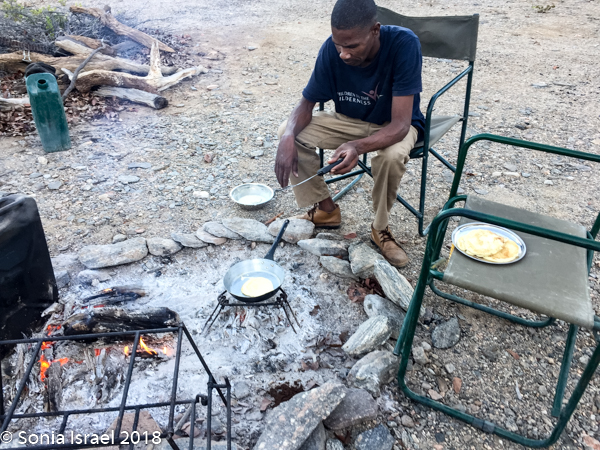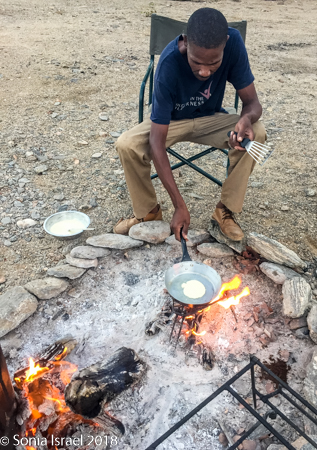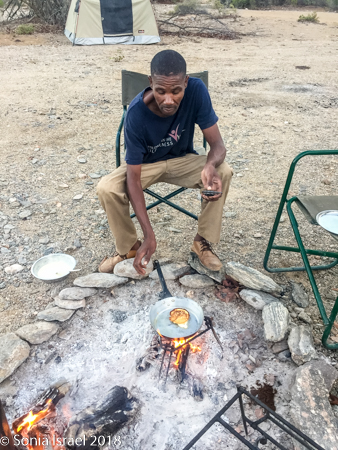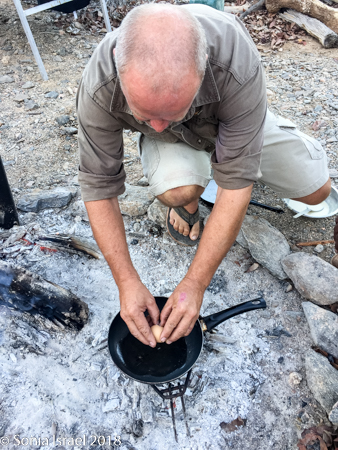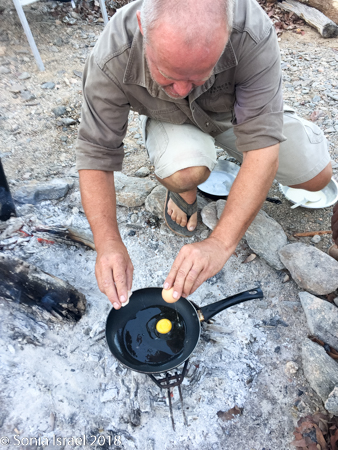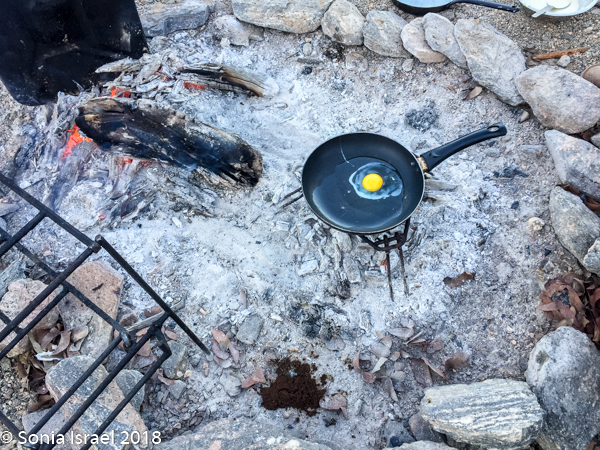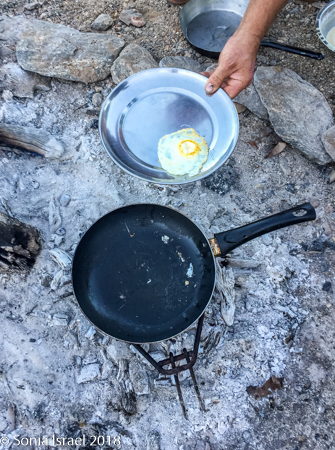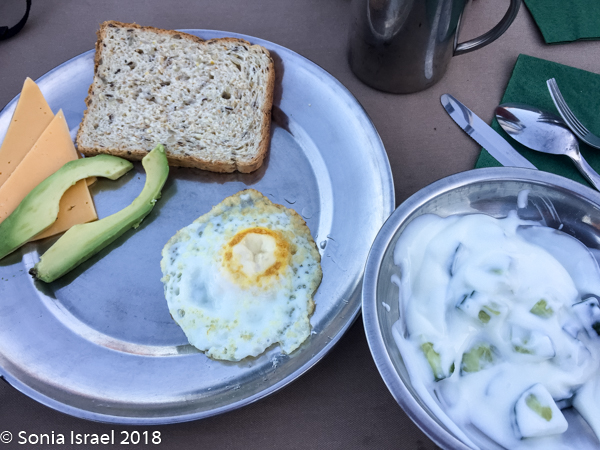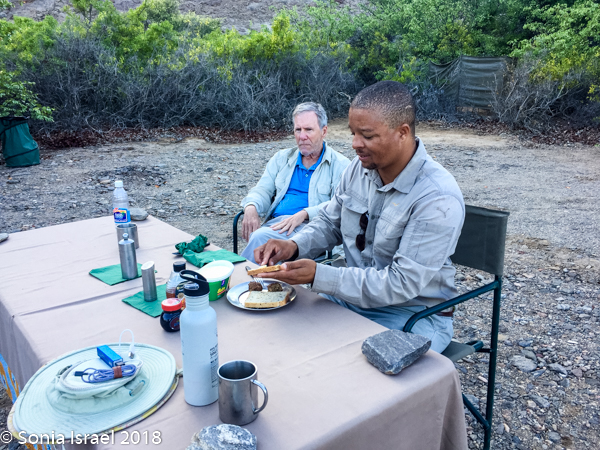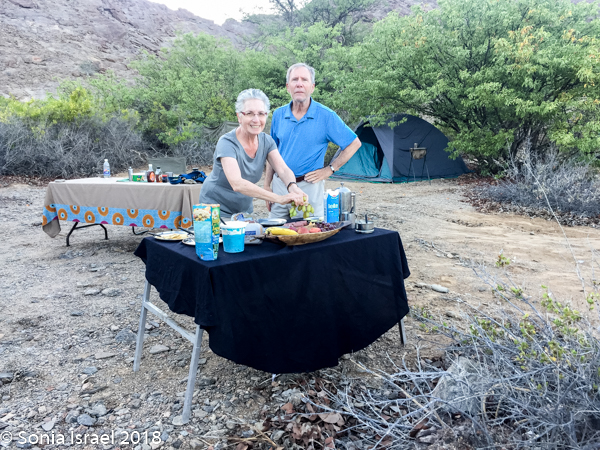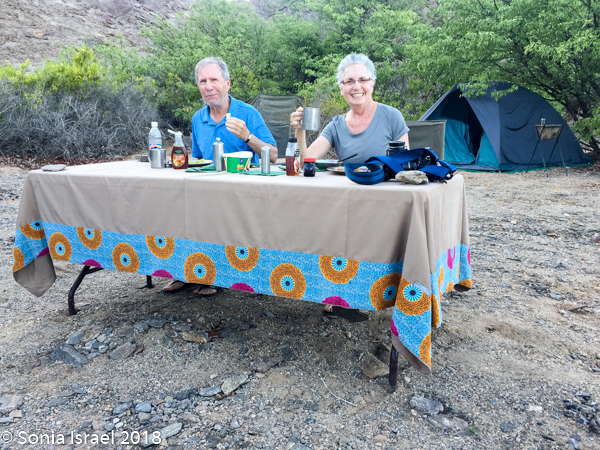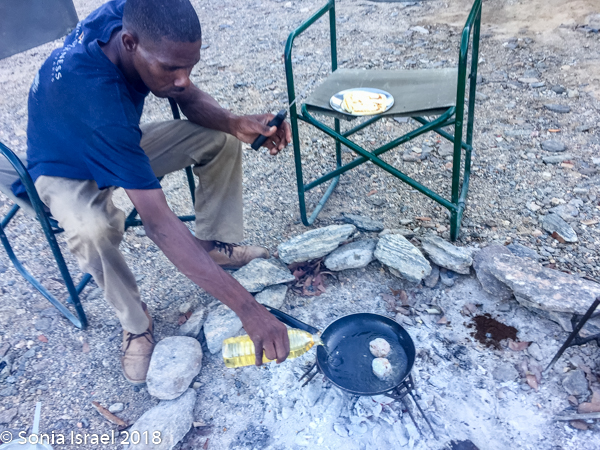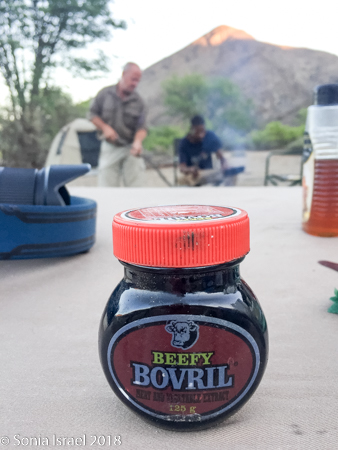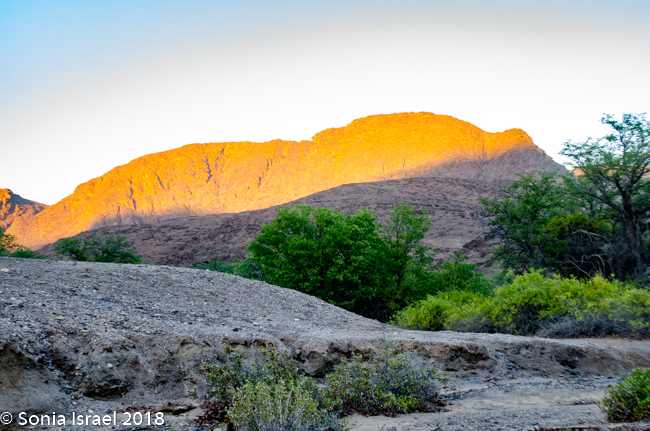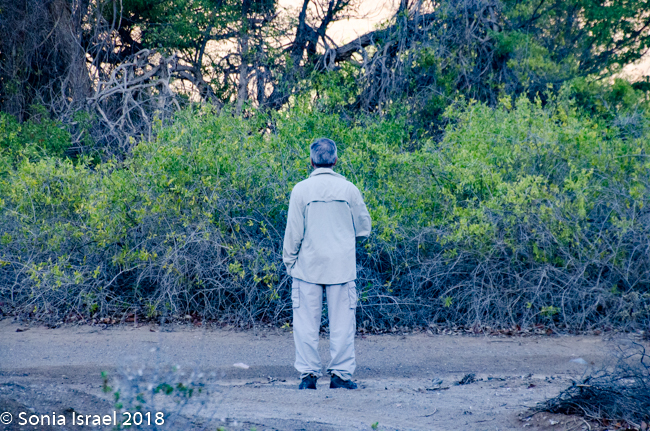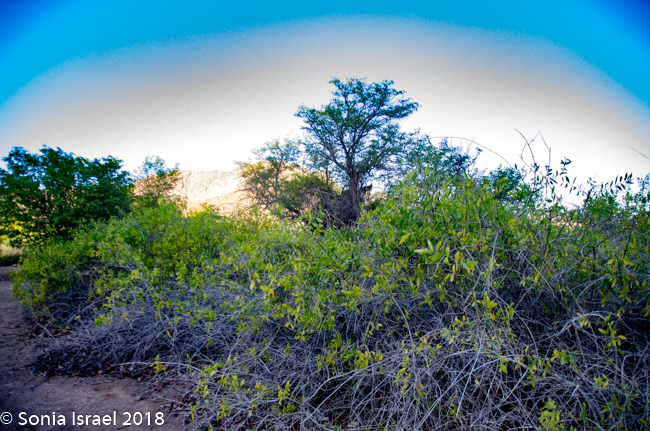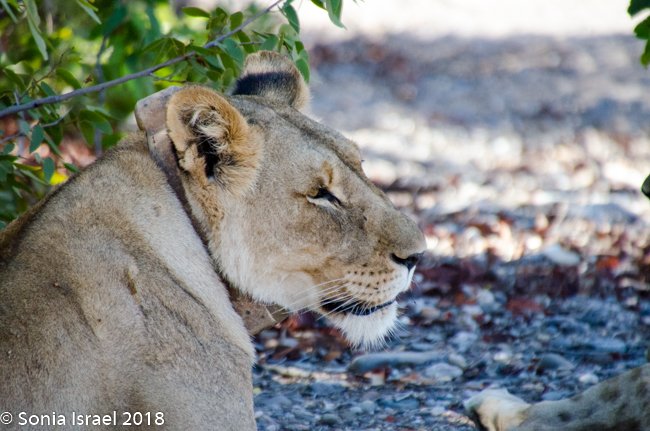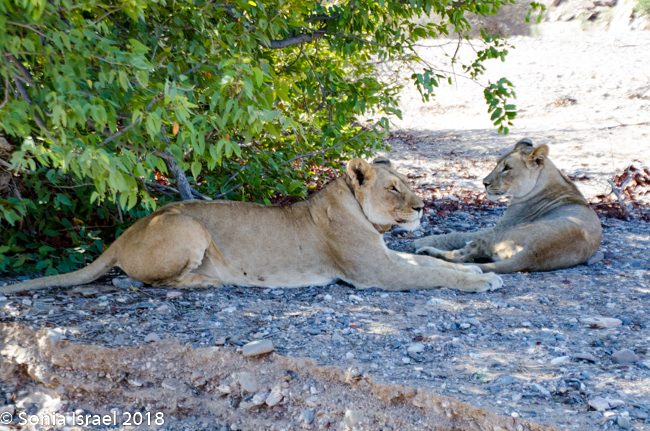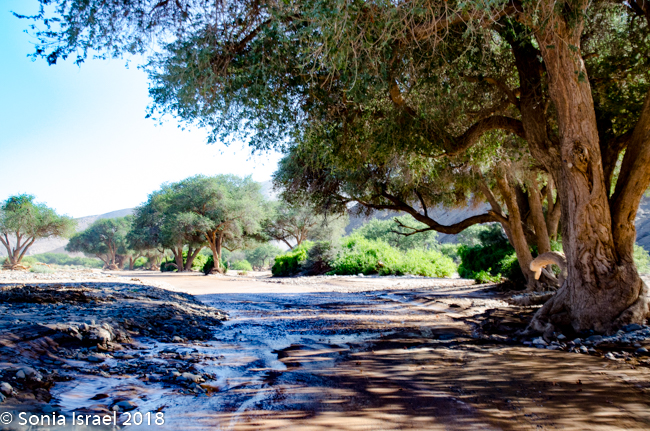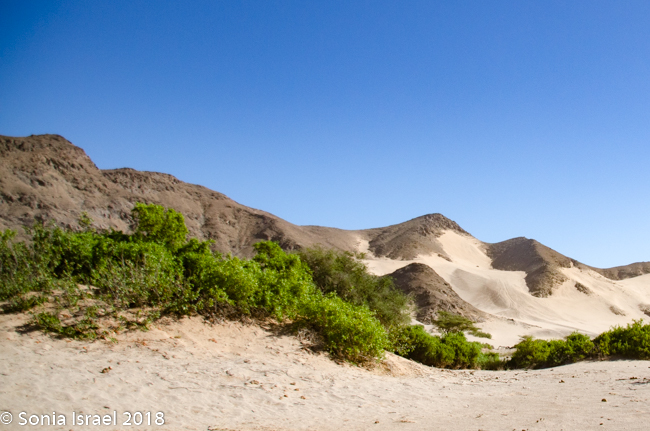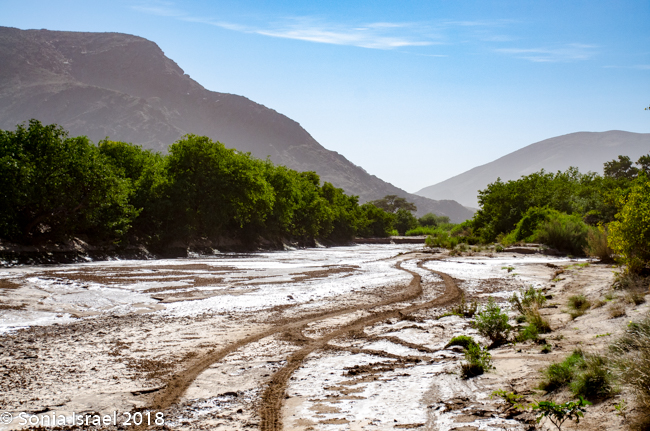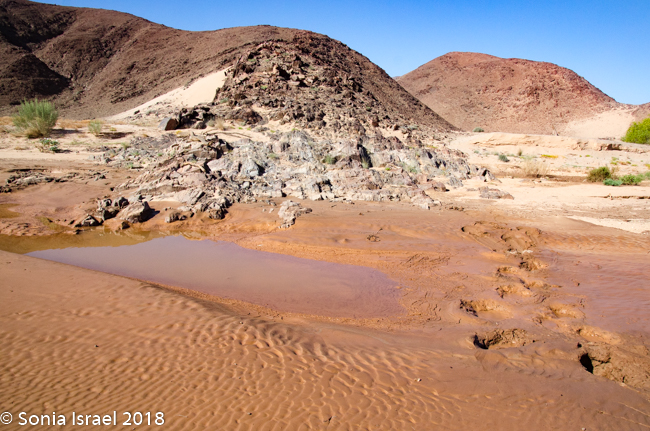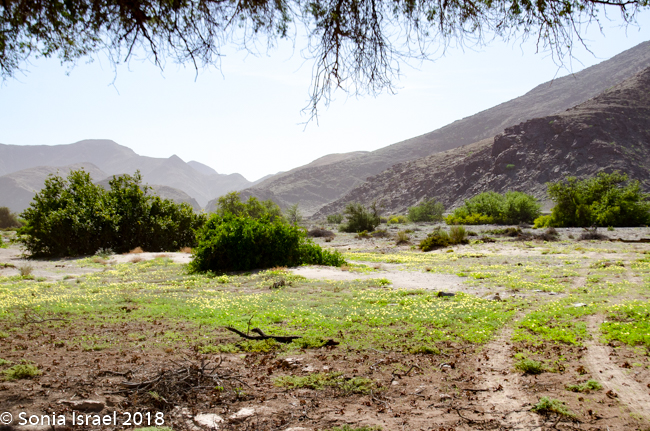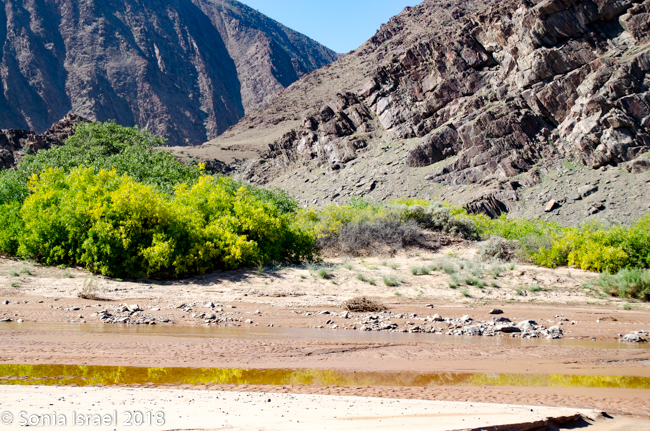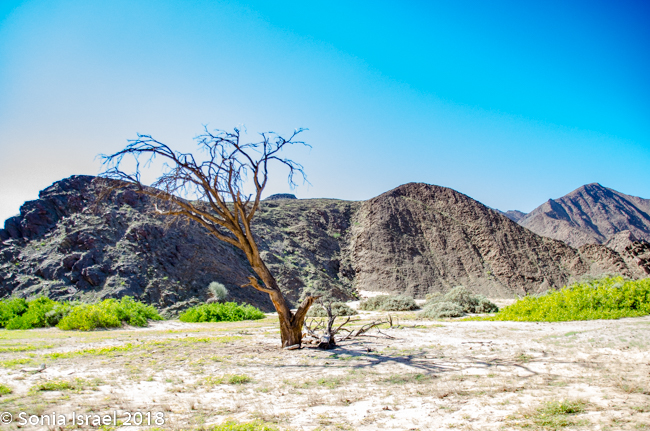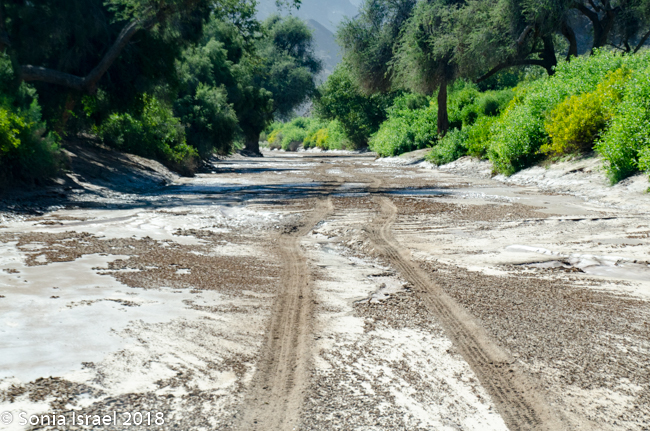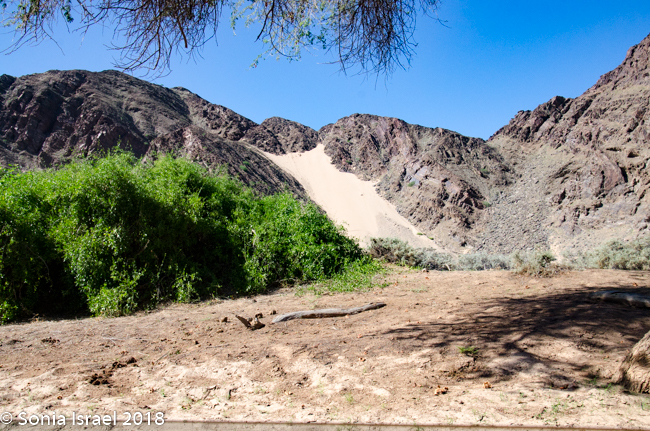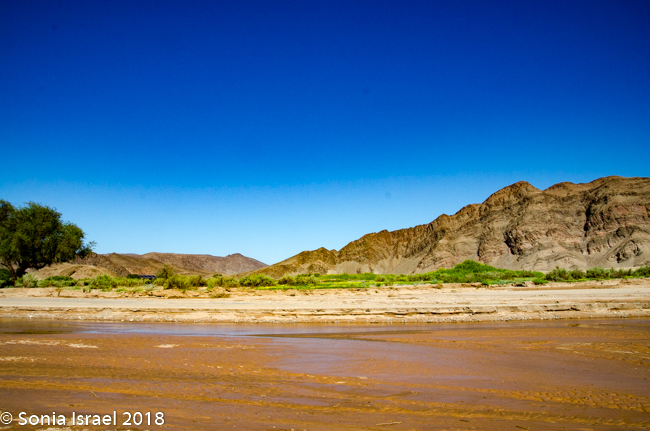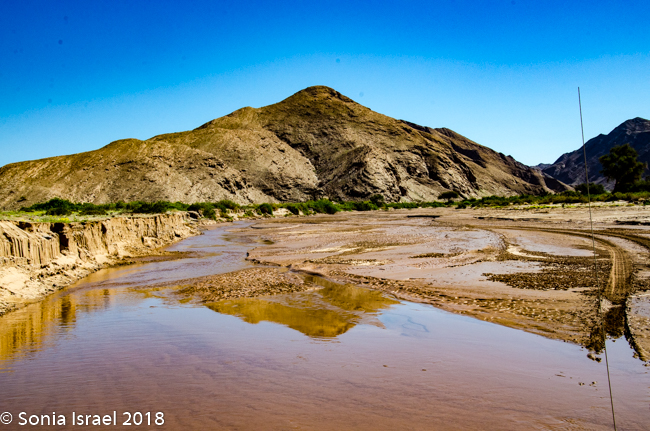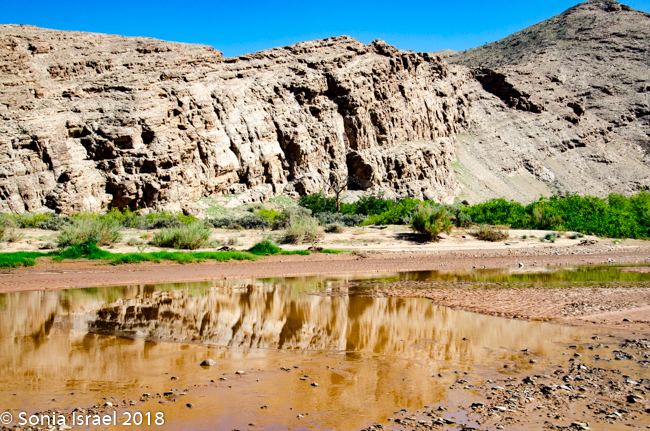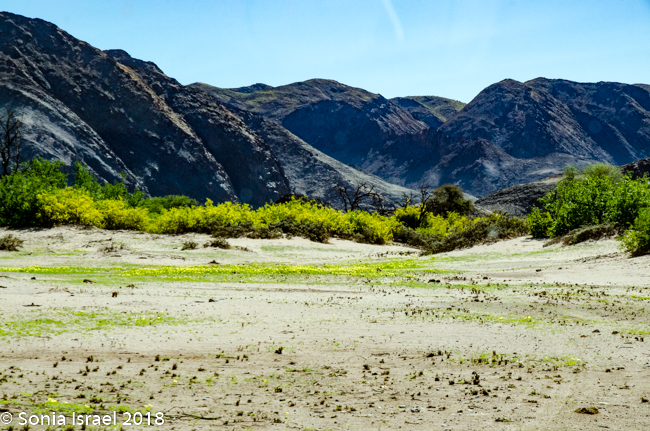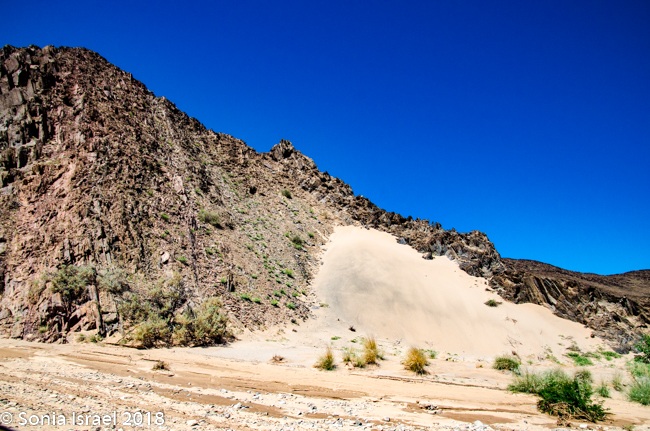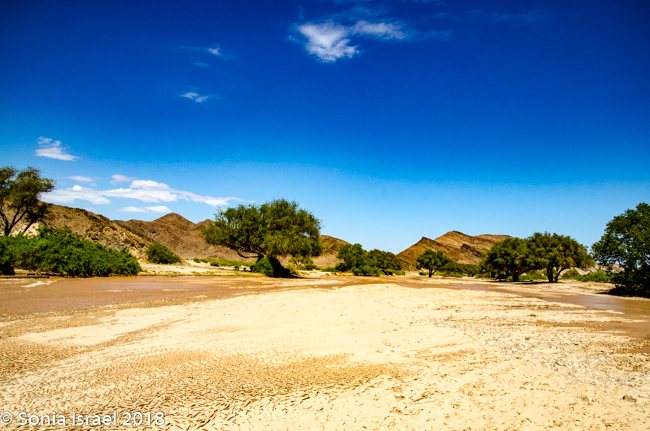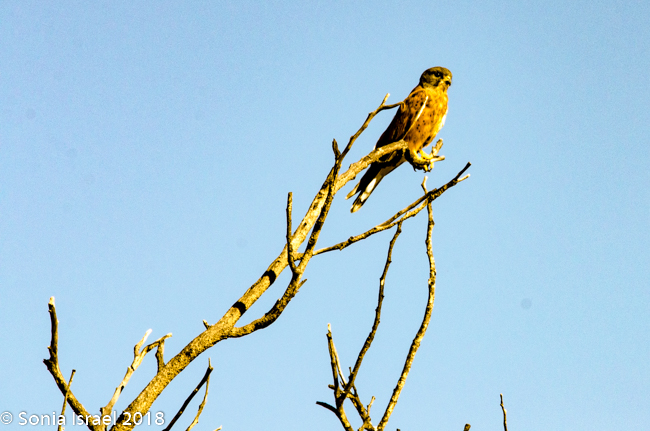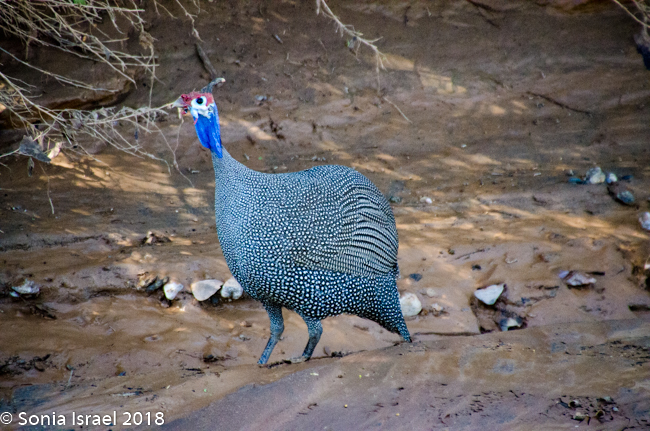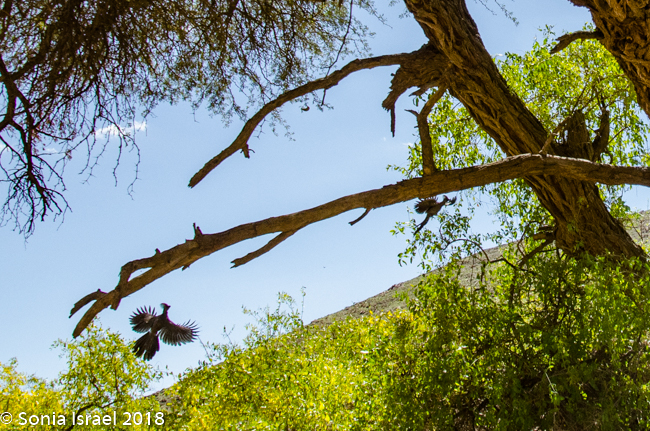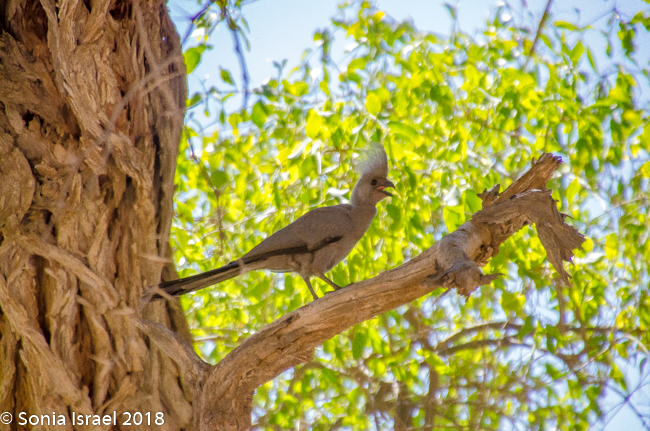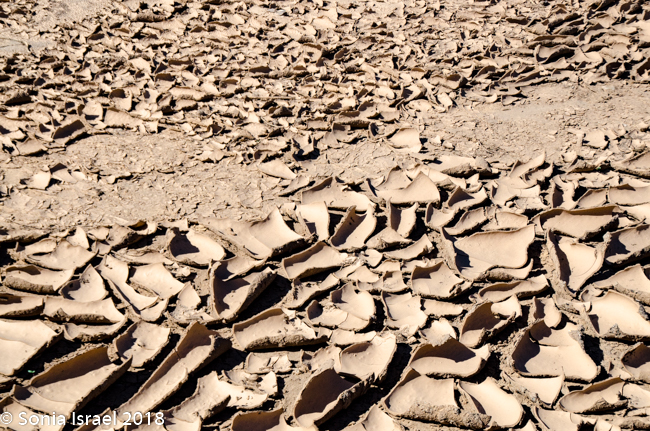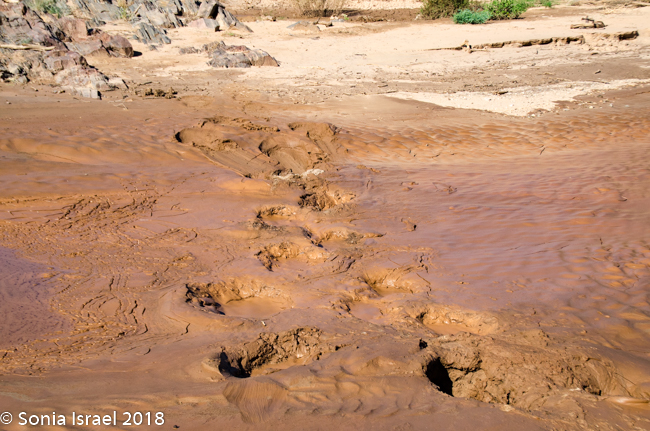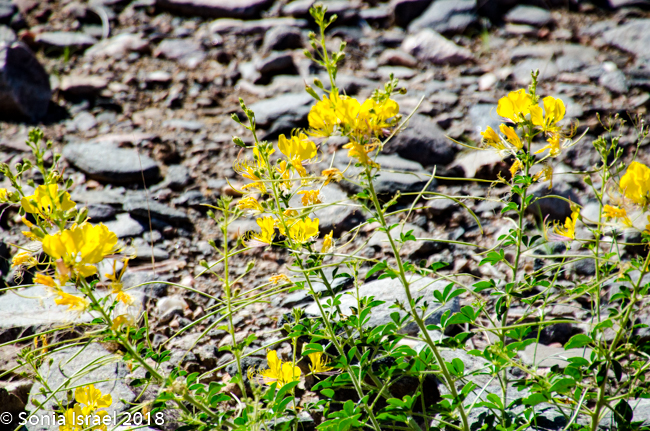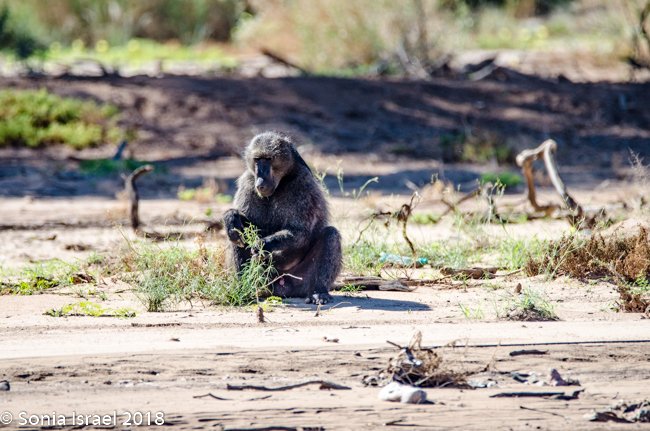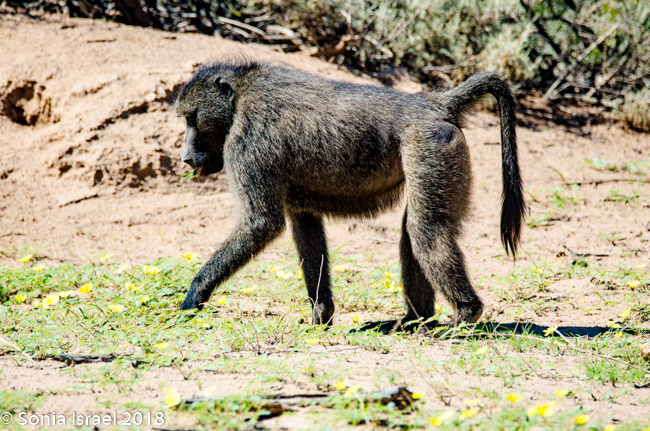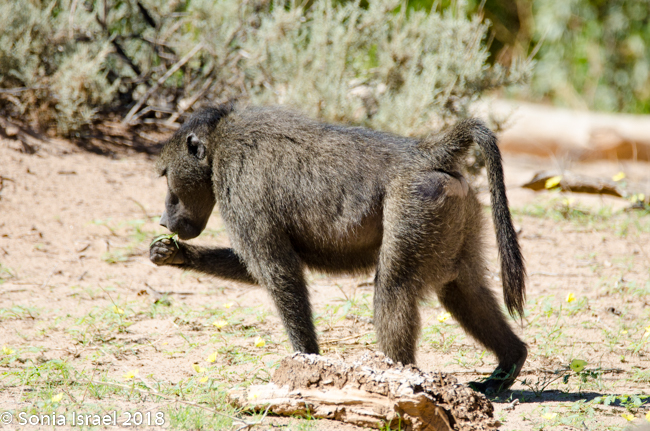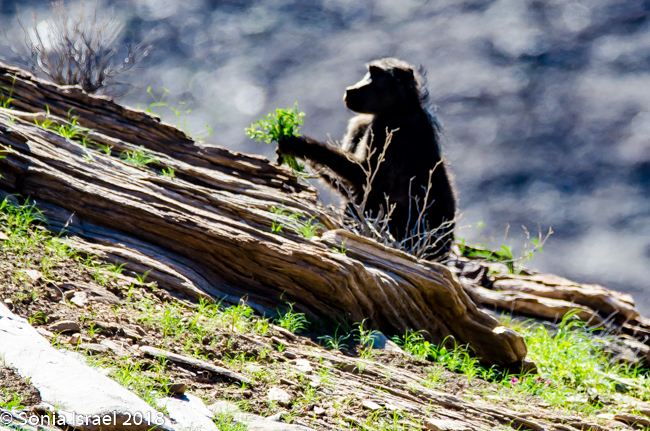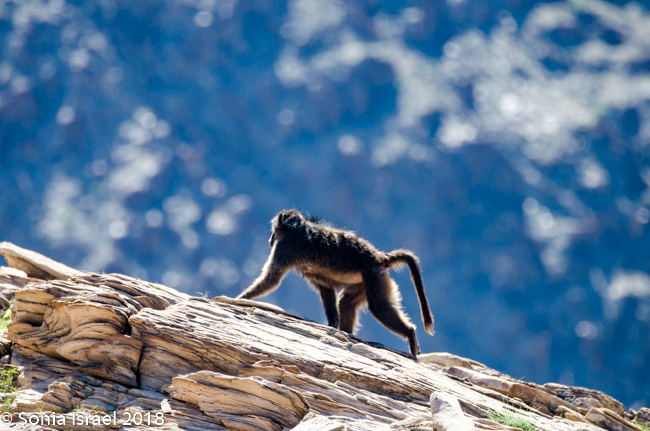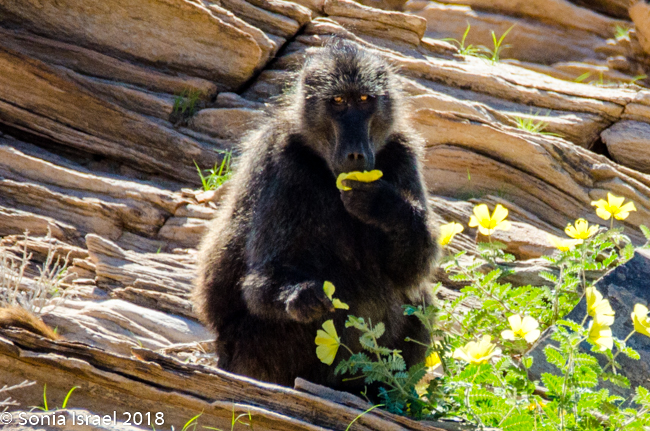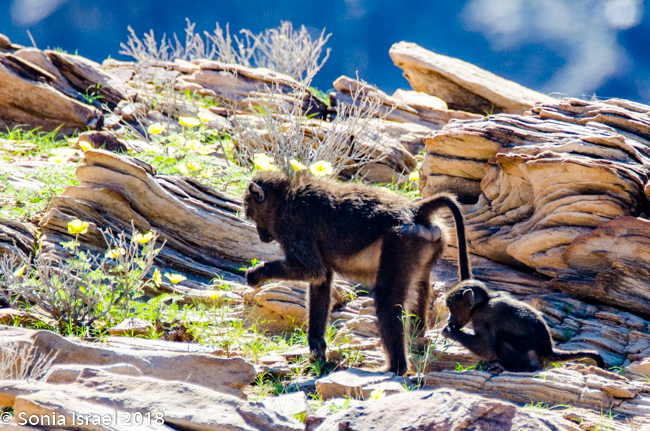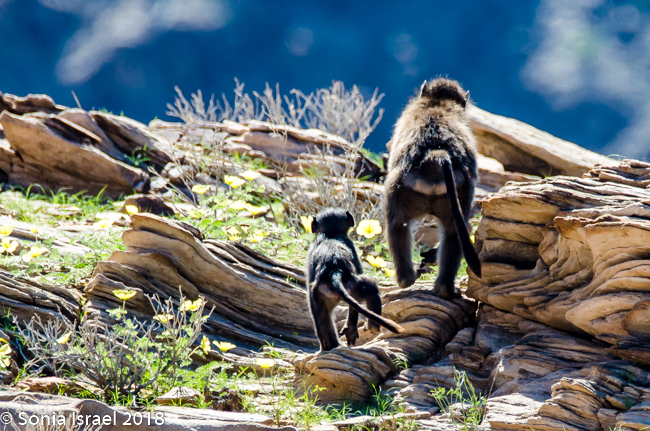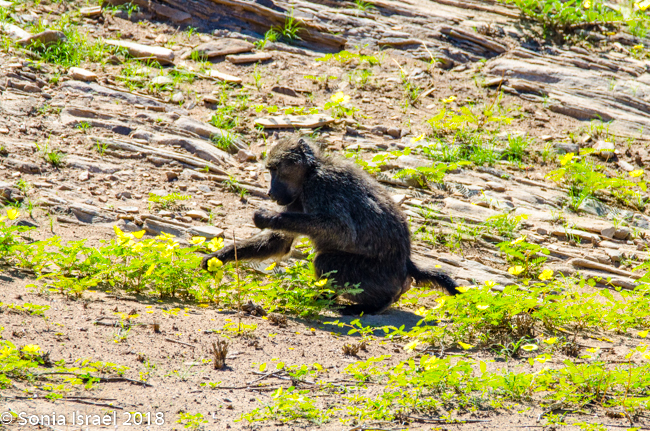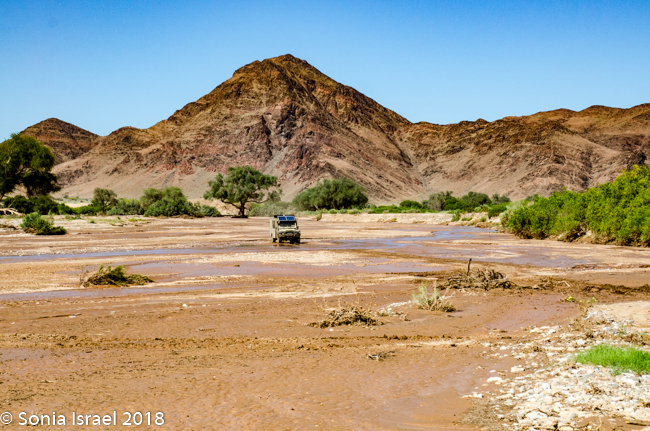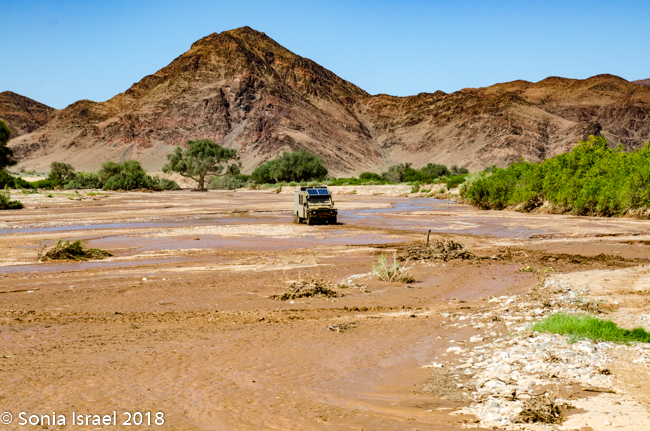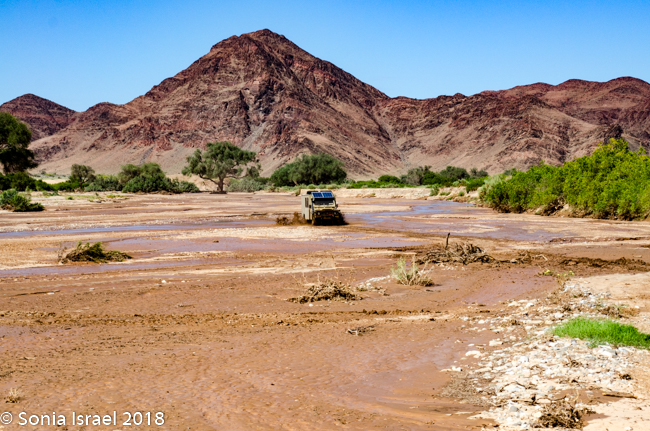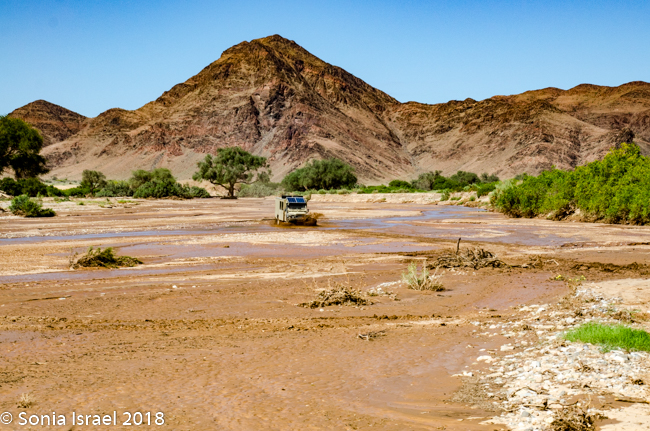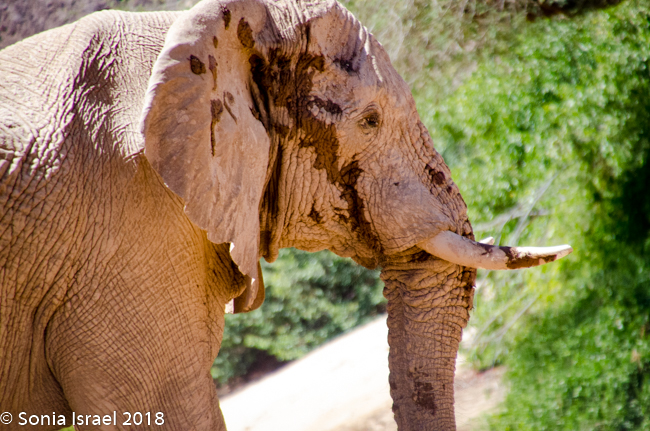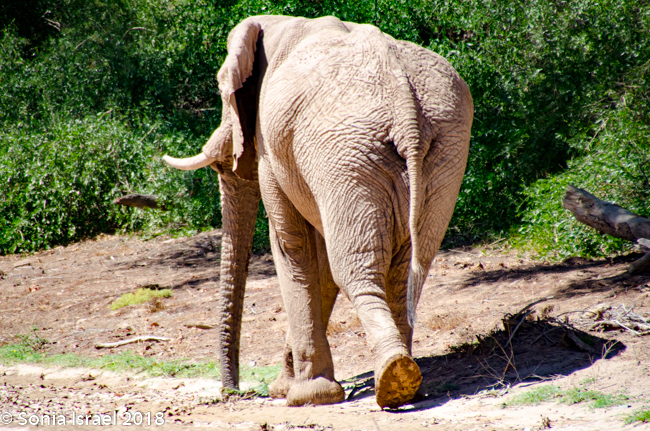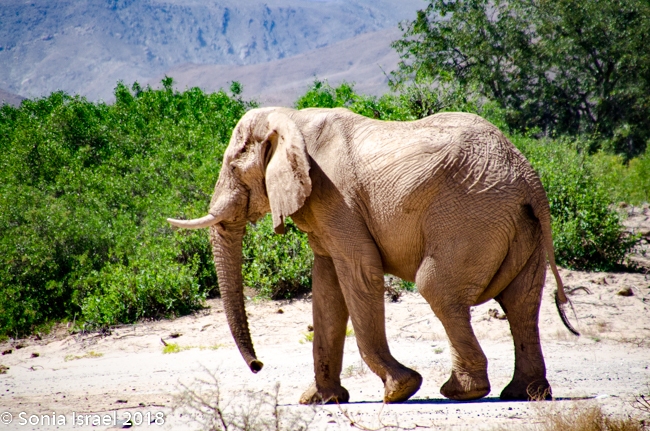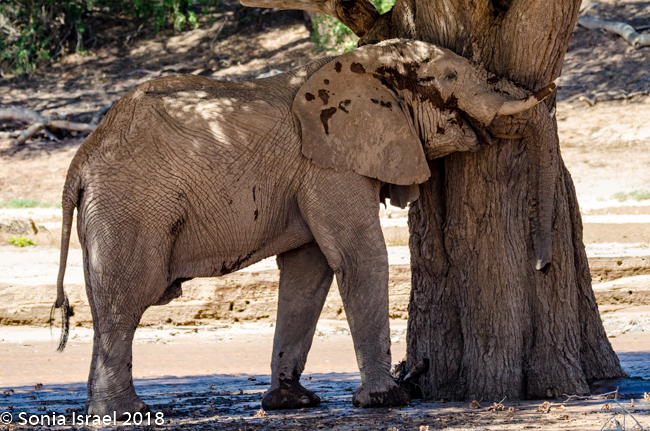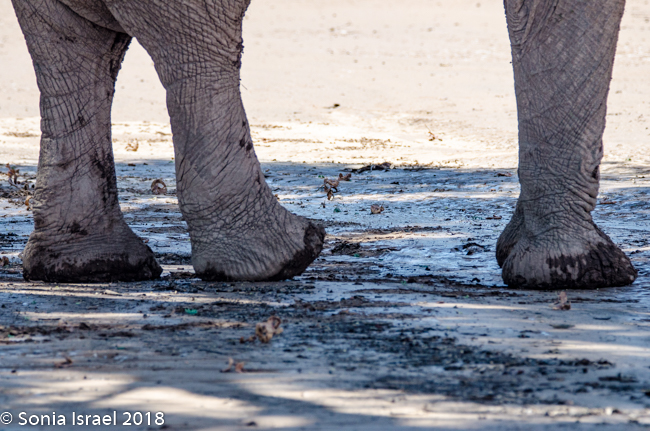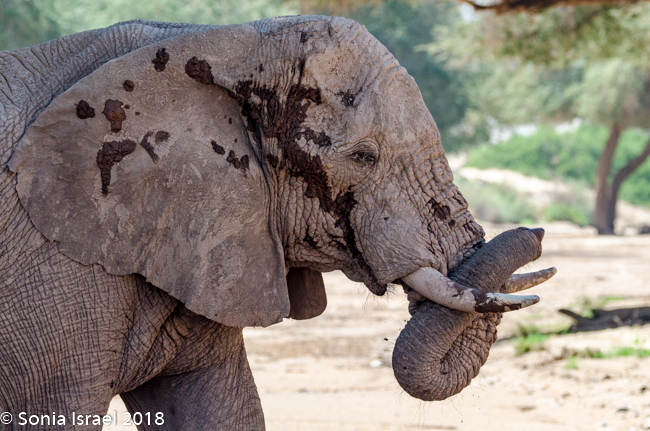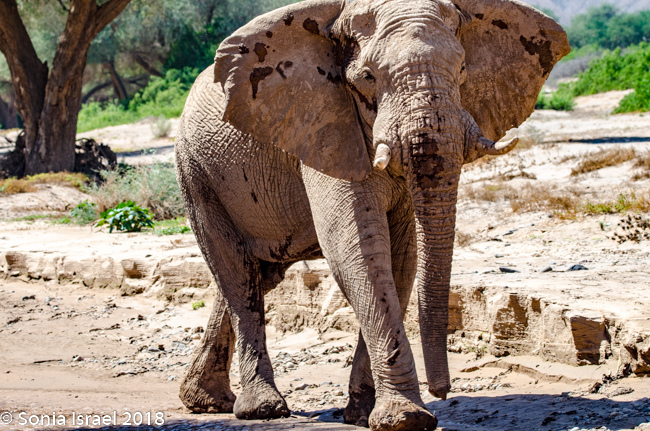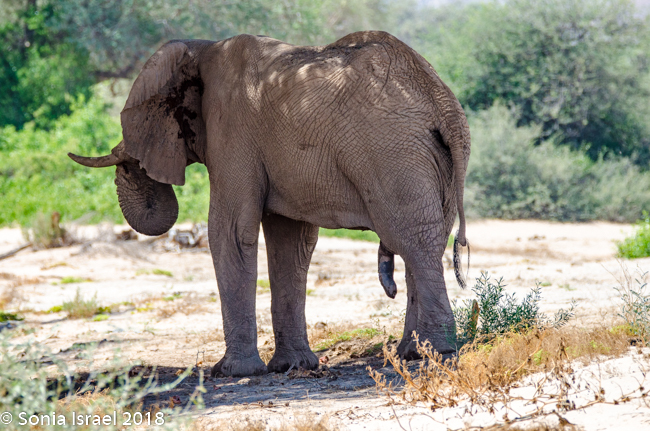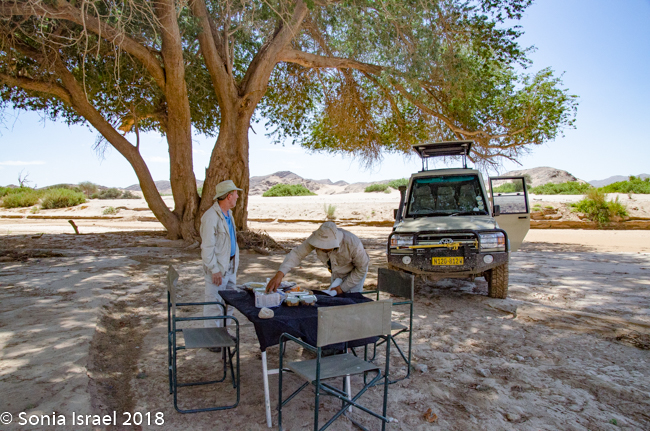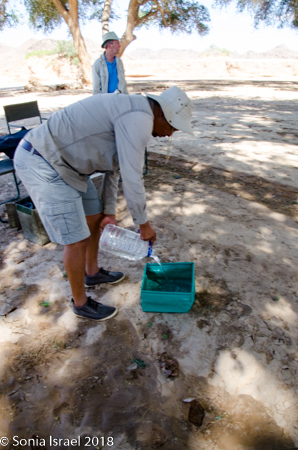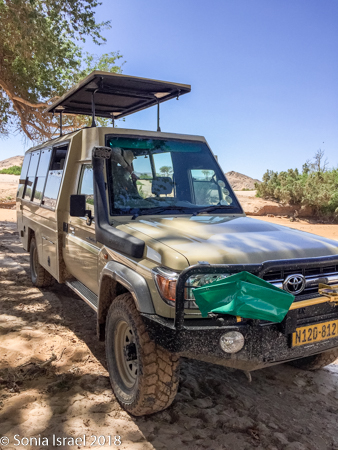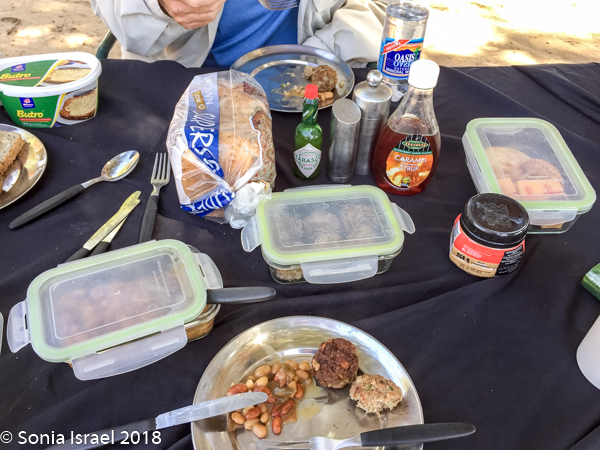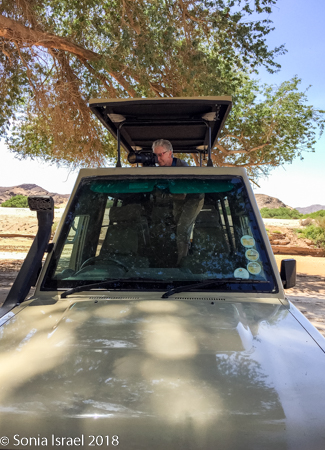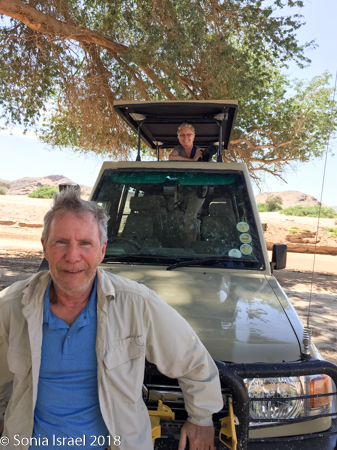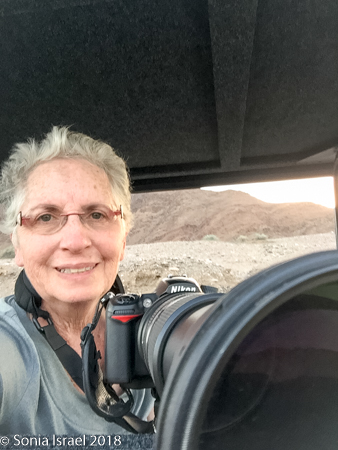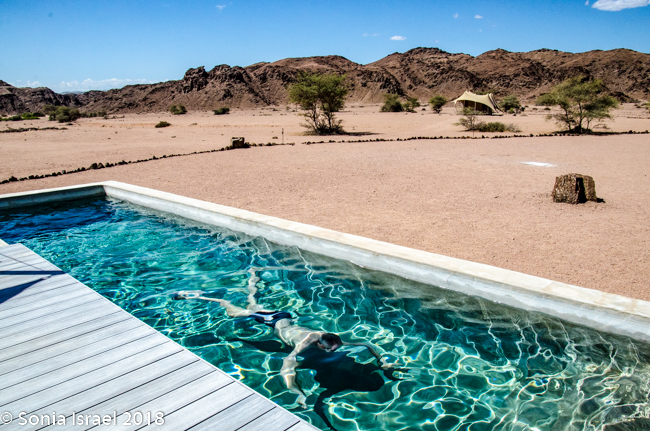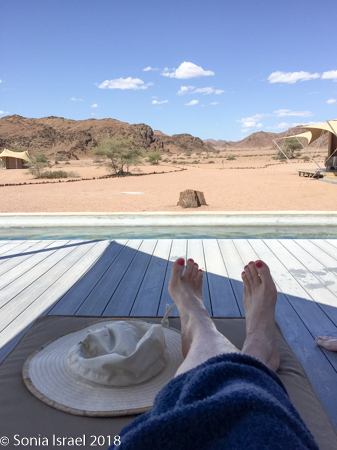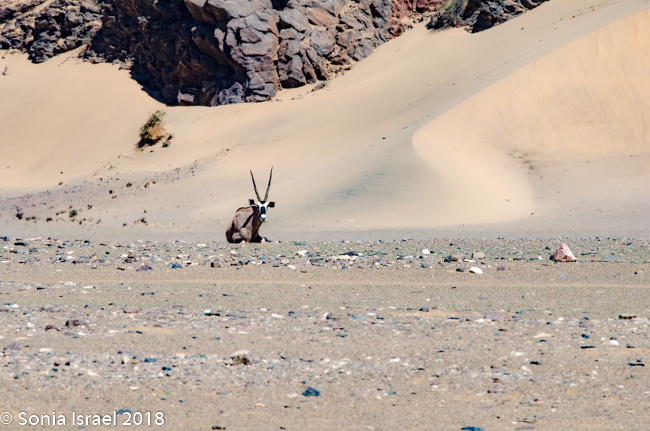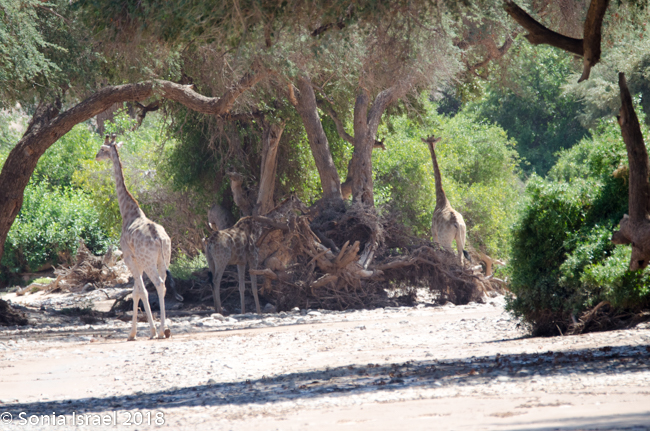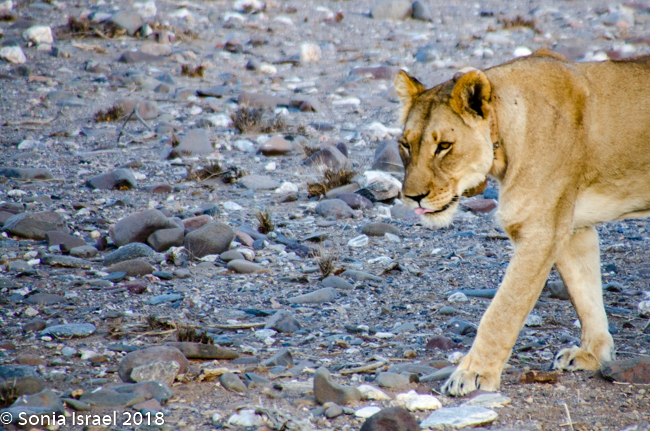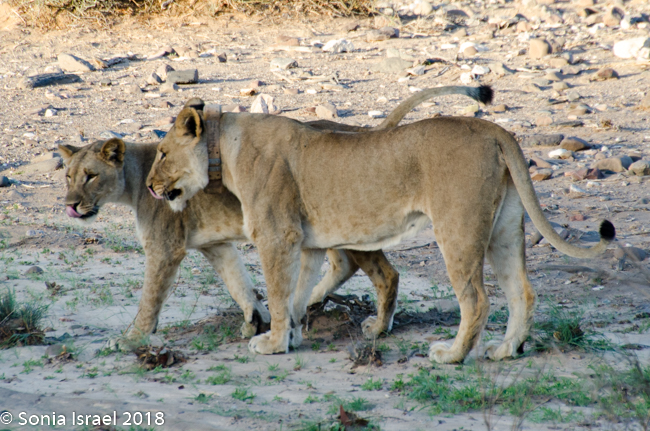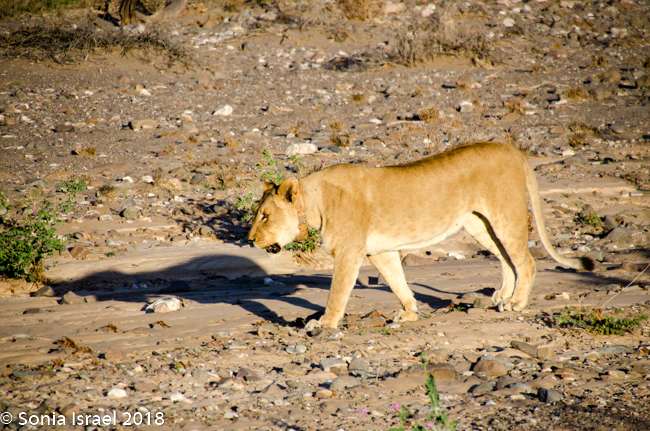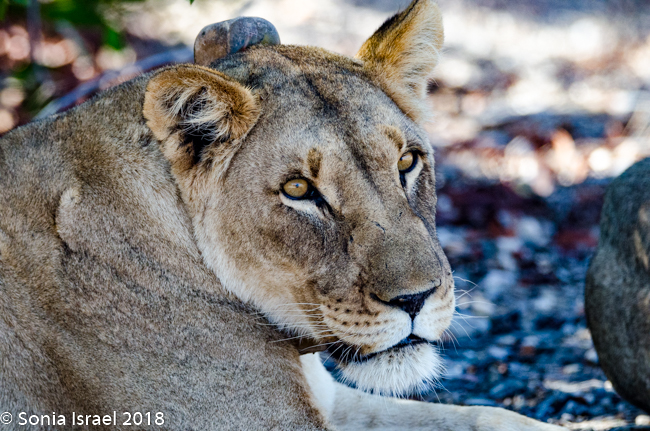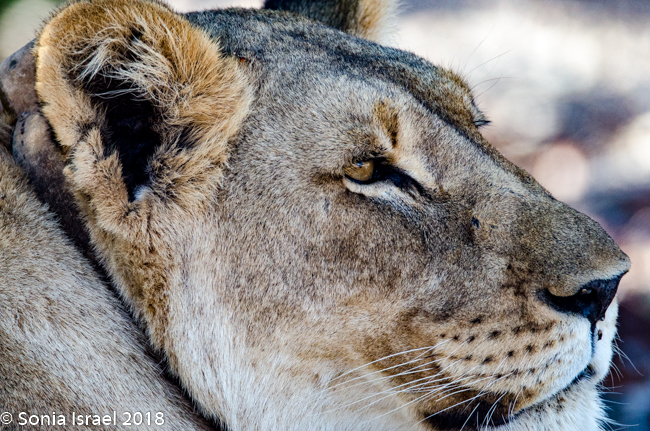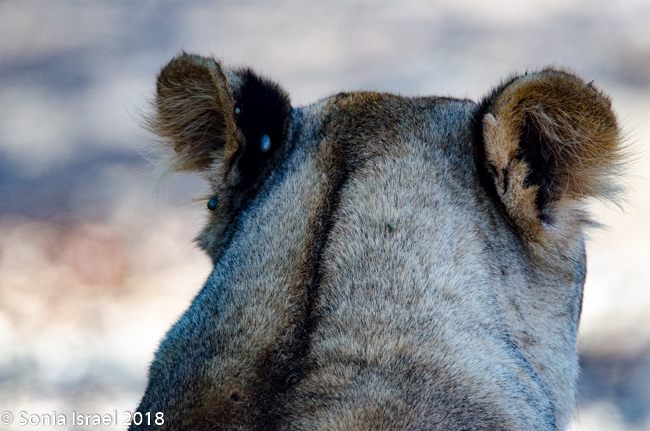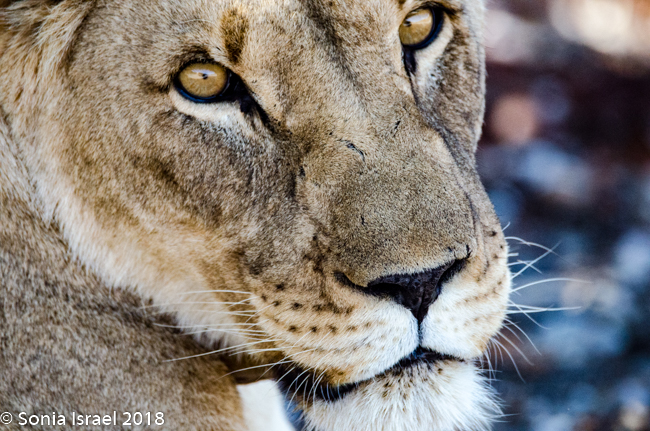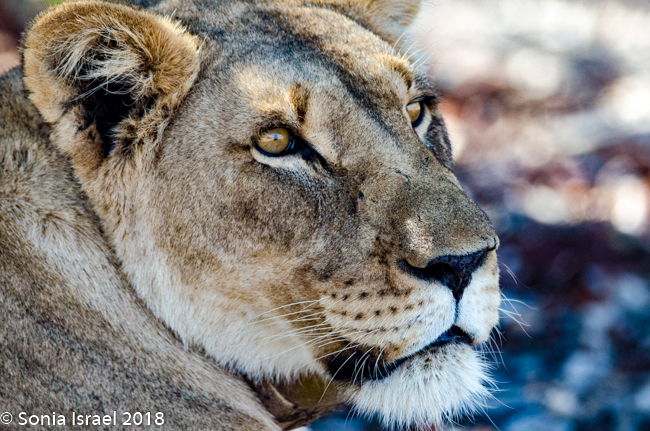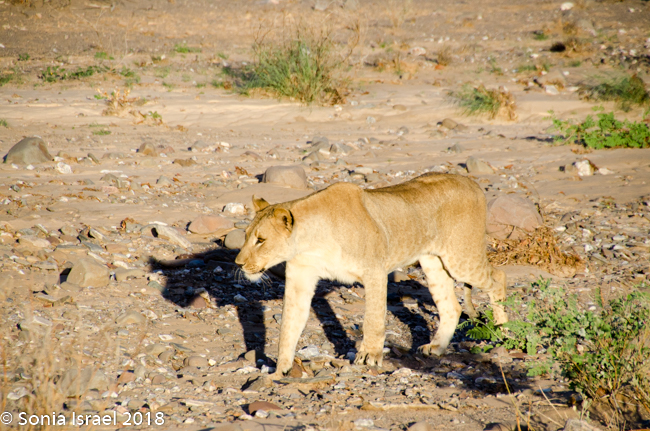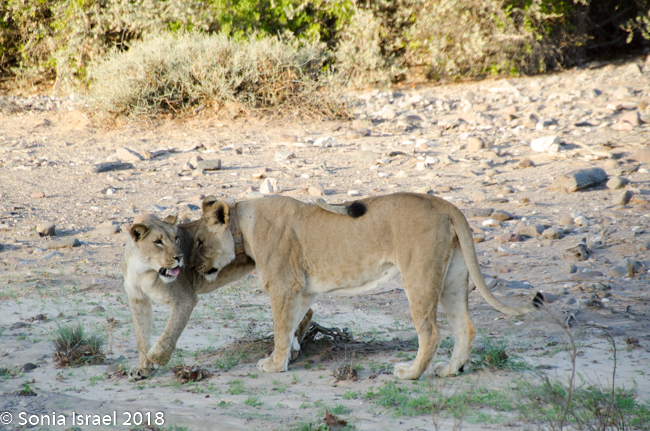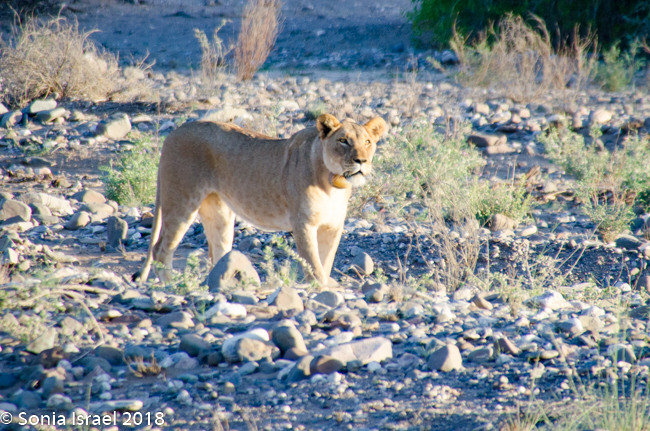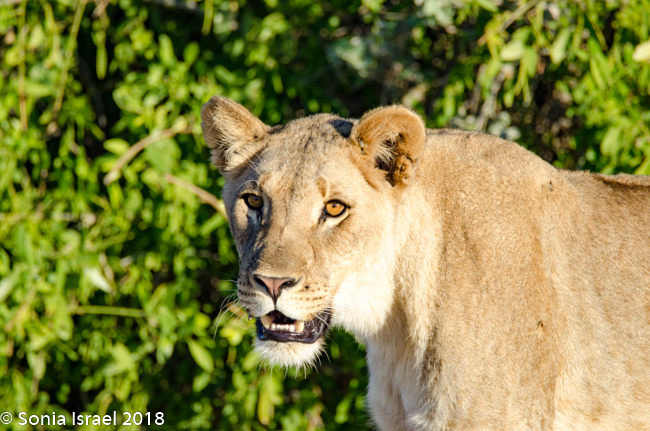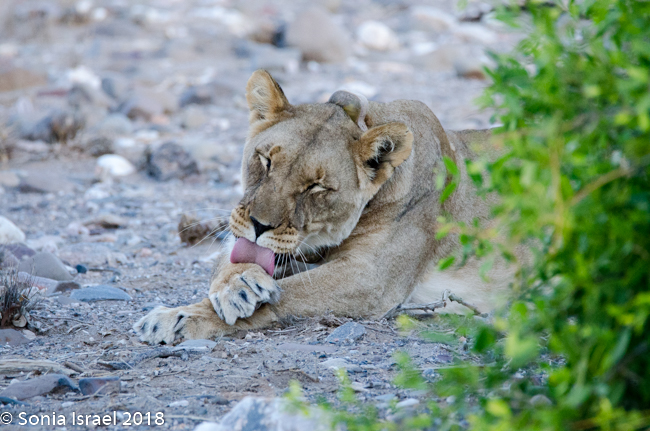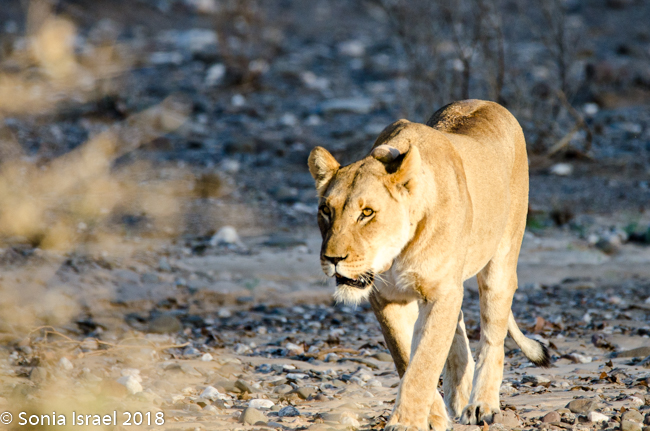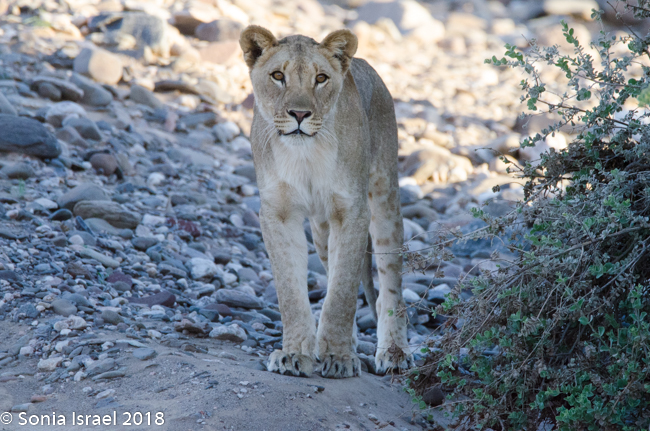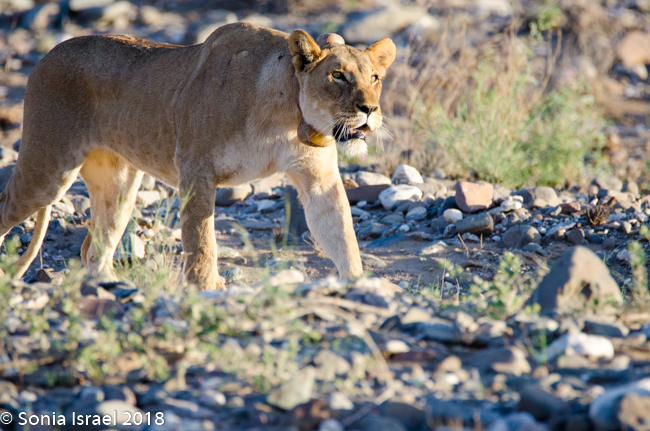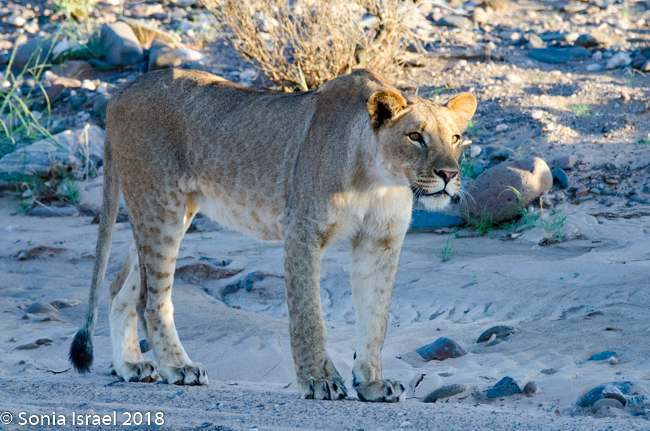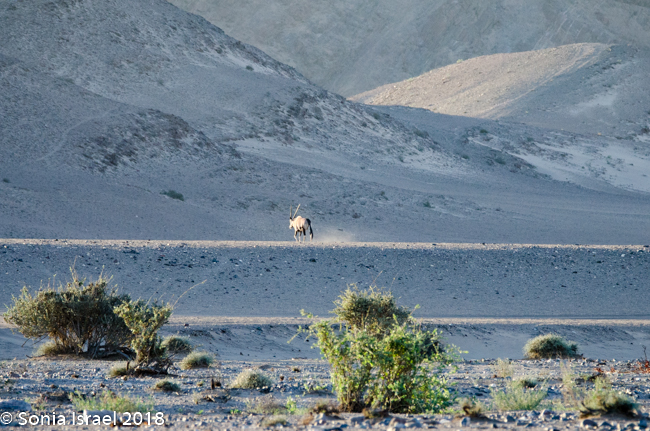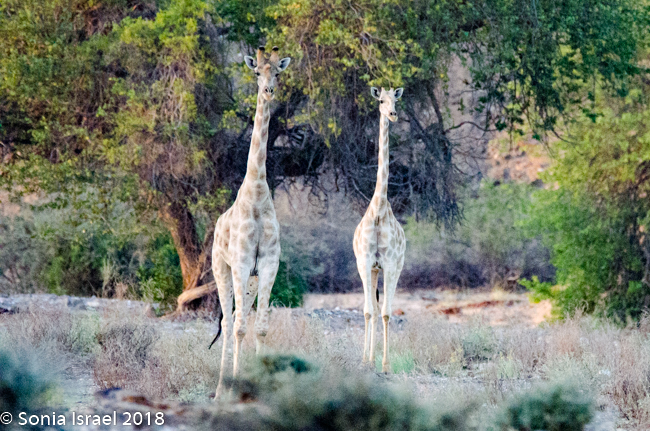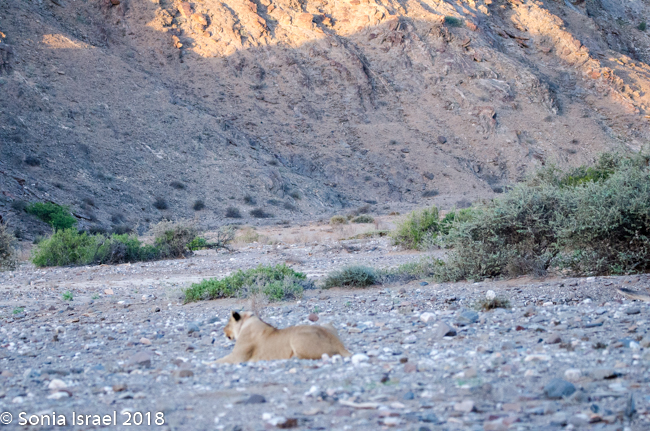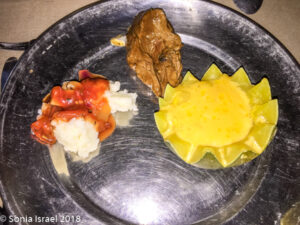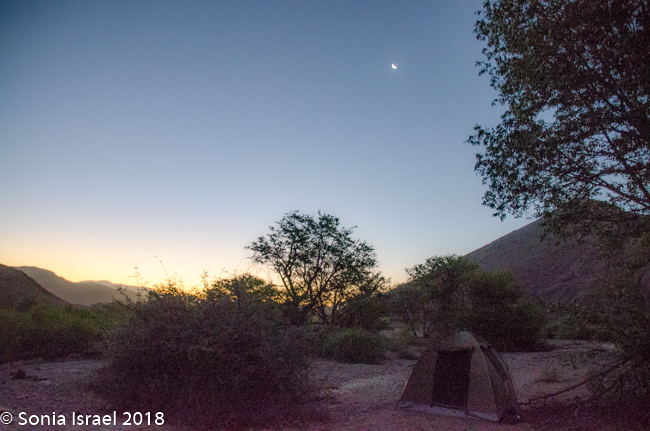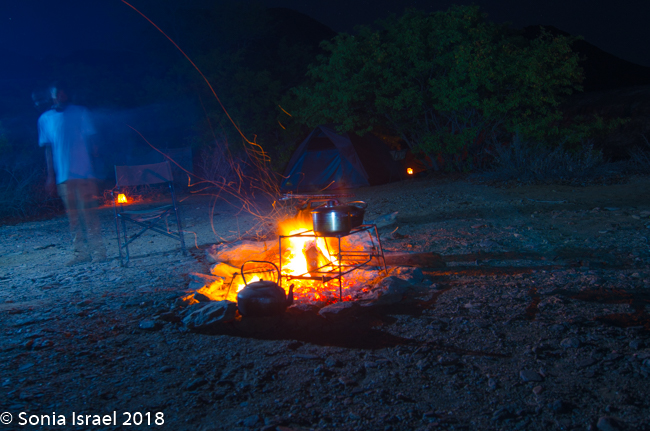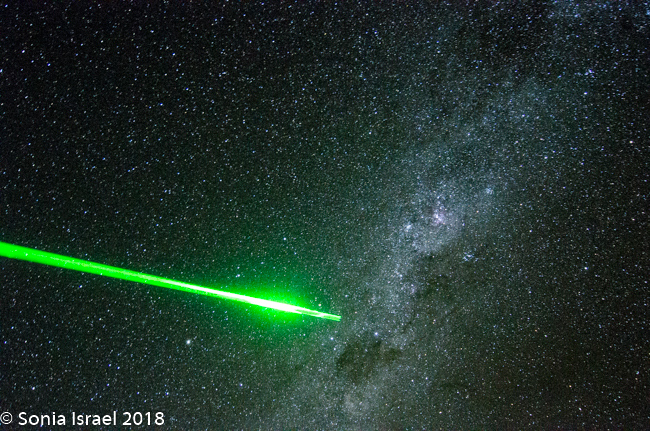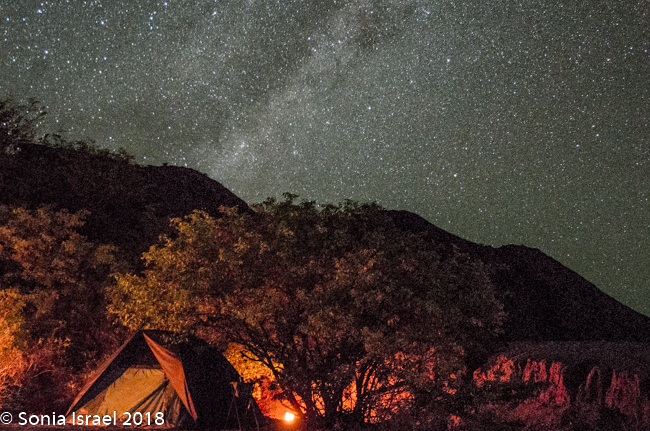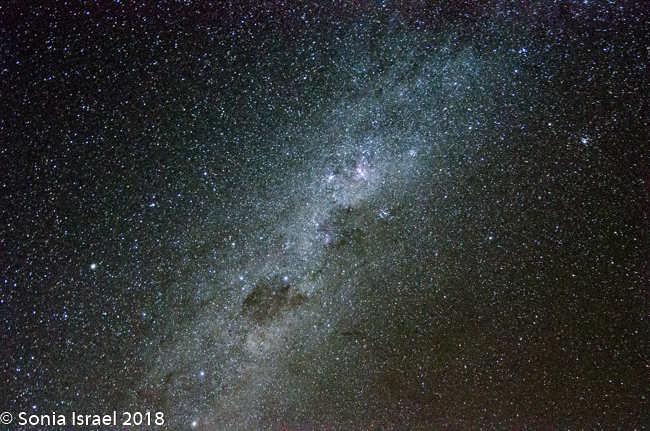April 18-21, 2018
Camping? Do you know me?
The Hoanib River is one of the 12 seasonal rivers in the west of Namibia, bordering the northern part of Damaraland and Kaokoland. This area is considered one of the last true wilderness areas in Namibia. It is also the one of last settlements of the desert elephant. The Murdorib flows off the Hoanib, at about 600 feet above sea level, and it is on the dry bed of the Mudorib that we would be camping for the next two nights.
Camping. Me? Those that know me know that camping is not my usual MO. How did this happen? When we met with Chris at Piper and Heath to plan our Wilderness Safari trip, the Hoanib Skeleton Coast Camp was full. But we wanted to stay in this area, so Chris suggested we camp. He promised a hot shower, a toilet and someone to cook for us. So I said, “Actually sounds like fun. Why not?!” So here we were.
Gerhard, who works for Wilderness Safari, met us at the plane when we flew into the Hoanib Skeleton Coast Camp and now we were in his Land Rover (cruiser? I get them confused…although in Namibia there are two camps – those that only drive the Rover and those that only drive the Cruiser). Gerhard was versed, it seemed, in everything. He taught us about the flora and fauna. He built our camp. He cooked for us (more on this later) and, he became our friend.
Rock Commiphora
The first thing Gerhard pointed out to us was what looked like a tree growing out of a rock. It was a Rock Commiphora, also called a rock myrrh. This plant is in the same family as frankincense although there are about 190 species of shrubs and trees, and the resin from the tree or bush can be used for fragrances and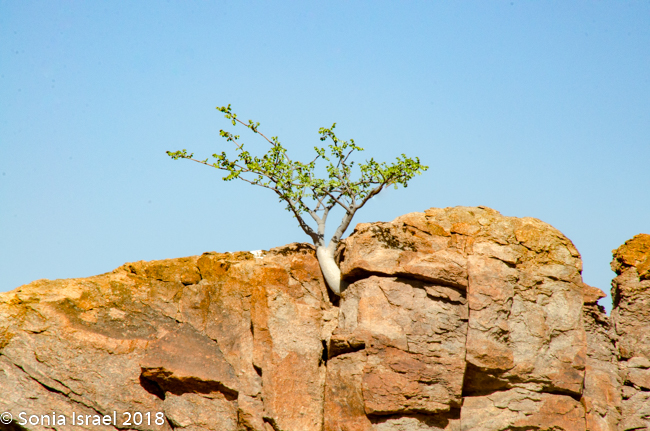 medicines. Here is the sub-tropical area of Africa it grows well as it is drought-tolerant. The name, in Afrikaans, means, “can not die.” But to me it looked like a white bark with green leaves which miraculously was growing out of rock.
medicines. Here is the sub-tropical area of Africa it grows well as it is drought-tolerant. The name, in Afrikaans, means, “can not die.” But to me it looked like a white bark with green leaves which miraculously was growing out of rock.
Welwitschia
We drove on and Gerhard stopped the car again and this time made us get out and take a walk to see the Namibian native flower, the Welwitschia or tree tumbo, common to the Kaokoveld area, where we now found ourselves. More commonly it is called a living fossil. You might ask why? Read on. I’m going into a lot of detail here because not only is it Namibia’s native flower, not only is the Namibia University named after it, but it is the most unusual plant I have ever seen or read about. The plant is named after the Austrian doctor Friedrich Welwitsch, who was the first European to describe the plant in 1859 in what is now Angola. He was so overwhelmed when he found it that all he could do was “kneel down and gaze at it, half in fear lest a touch should prove it a figment of the imagination.” As with much of science, it had been independently drawn by the artist Thomas Baines in Namibia. Welwitsch, being the modest man he was, wanted to call the plant Tumboa after the local name, Tumbo. But others asked his permission to name it after him.
It has been described as the most wonderful plant but also one of the ugliest. It is also described as bizarre, weird, strange, fascinating, wonderful, peculiar, unique, and one of a kind unlike any other plant on earth.
It has large, strap-like leaves that grow continuously along the ground. During its entire life, it grows only two leaves which could however split into many segments, often because of the strong winds blowing through the desert. This is no small feat as its entire life can be thousands of years, literally centuries old. I read a single plant can live anywhere from 1500-2500 years old. And thus the name, the living fossil. Can you imagine a plant 1500 years old? If only it could talk! What stories it could tell.
This is not a small plant. It can grow as high as 5 feet, but as wide as 26 feet. Yes, 26 feet. How does it get its water? When it is foggy, the stoma remains open and collects condensed water, which then runs off onto the plant. When it is hot, the stoma closes to keep the water from evaporating. No wonder it can survive for thousands of years. It is a smart plant.
There is both a male and a female plant. It was believed that bugs fertilize the plant, but now it turns out it may be that its seeds are dispersed by the wind. The female has red pollen cones which appear in groups of 2-3 on each branch. The male plant have red flowers that look like cylinders.
- Male
- Female
So Gerhard made us walk through the desert looking for this plant. We saw a male that looked more like it was dying (how many thousands of years was it?). Then Gerhard spotted a bigger, better one down the “road” a bit, so we trekked over to see it. And then another one a bit further on. There weren’t a lot of them. It was more like they had been dispersed here and there. But it was fascinating.
Later, when we were back in the car driving, we saw a male and a female on the hill, both in full bloom. And a few days later, when we were in Khowarib (please see that post), we saw a field full of them.
President’s Water Hole and Ana Trees
We drove and drove and drove some more. We were now driving on the plain, surrounded by mountains. The mountains were brown and green and purple. But it was still very dry and very desolate looking. The “road” or path with tire tracks, was a combination of sand and small rocks.
We crossed a dry river bed and Gerhard stopped to show us the Ana tree, also called acacia tree. The Ana looks like an umbrella because the giraffes and elephants eat it  so it is flat at the highest point the animals can reach. It produces flowers which turn into pods that are shaped like a crescent moon. Both elephants and giraffes like to eat these pods. The bark of the tree is often used as firewood and sometimes used medicinally. The tree itself is strong can thus can resist floods and can grow in the middle of the river.
so it is flat at the highest point the animals can reach. It produces flowers which turn into pods that are shaped like a crescent moon. Both elephants and giraffes like to eat these pods. The bark of the tree is often used as firewood and sometimes used medicinally. The tree itself is strong can thus can resist floods and can grow in the middle of the river.
Just up the road was the President’s water hole. The President of Namibia had this built so that the animals would have a water hole even during severe droughts. This was great for the animals, but to me it looked like a concrete pool that just didn’t belong in the wild desert. There was a water tank, surrounded by concrete barriers to protect it from curious elephants, that kept the water hole full. And there was graffiti on the concrete! Really? In the middle of nowhere in Africa, graffiti? What are people thinking?! The concrete created a tunnel and Gerhard warned us to always look to see if a lion might be sleeping in there. At one point the next day, we used this as our bush toilet and yes, we checked for lions first!
Desert Giraffes
Gerhard challenged us to find a giraffe. He had clearly seen them but there were still hidden from our eyes. And then suddenly, there they were. This was a case of experienced eyes vs tourist eyes, once again. There was one giraffe, calmly eating from a bush. And then we noticed a second. And a third. And two babies. It was a family of desert giraffes.
Desert giraffes, which have lighter spots, have ranged across current day Namibia for many thousands of years. How do we know that? A few days later we would see petroglyphs (engravings) of giraffes in the Kunene Region (please see the post about the Himba).
Our campsite
We drove some more, in and out of clumps of trees. I had no idea how Gerhard knew where he was going. We passed a few tents, other campers, and I thought, “hmm, neighbors.” But no. We kept going. We saw a beautiful rock formation on the side of a mountain. And when I pointed it out, Gerhard replied, “That’s the view from your shower.” OK then. Let’s find this campsite.
We drove a bit farther. In and out and around more trees. And then suddenly, in front of us, was our campsite. We anxiously climbed out of the car to explore. There was a fire pit with chairs around it, a tent big enough to stand in for us, and a smaller tent for Gerhard. Our blue tent had two cots and a small table in it with a lantern and bug spray on it. Gerhard suggested we try out the beds and decide if we prefer the mattresses on the ground. We did. Next to the tent was a canvas sink where we could wash our hands and brush our teeth.
There was a path to the right that led to a screened off area. I peeked behind it and found a large hole that had been dug into the ground, with a toilet seat on legs over it. Next to it was a shovel with a hill of dirt to push into the whole when we were done with our business. And there was a roll of toilet paper sitting on a rock.
Around the other side of our tent was another path that led to a second screened off area; actually partially screened and partially surrounded by trees. This was our shower. Smooth rocks had been placed in the center and there was a bucket with a shower head on it hanging above. This is what they mean by a “bucket shower.” On the ledge stood three bottles from the lodge filled with lemongrass shampoo, conditioner and shower gel. And there was a chair conveniently placed for our clothes or to sit on to remove our shoes. And from here we did indeed have the view of the mountain.
But Gerhard was not done with us yet. He produced a yellow hand-held shower and told us he had been wanted to try it out. It would attach to a large container (sort of like the kind of container we would take to the gas station to fill with gasoline). That would give us more water than the bucket. The container sat in the campfire to heat up and then would be mixed with cold water. And at night, they set out candles in paper bags to light our way. All the comforts of home.
- Bucket shower
- Fancy shower
- View from shower
Gerhard put up a table and covered it with a tablecloth and then snacks. He lit the fire and produced wine for me and a beer for Andy. So we sat by the fire, smelling the smoke and feeling the breeze on our faces, hearing birds chirping, and just surrounded by mountains and trees.
And while we relaxed, he went to work preparing dinner. I peeked behind his car and found a whole prep “kitchen.” He had a table set up where he could slice and dice and prepare the food.
Before he was done, a car drove up to drop off Gerhard’s sous chef and assistant, Ronnie. Ronnie was responsible for heating the water for our showers, making our beds (yes, even in the tent) and helping Gerhard cook. Ronnie belongs to the Herrera tribe and I looked forward to chatting with him and learning about their customs. But Ronnie was shy, and only with Gerhard’s help, where we able to get him to talk a bit. The description of the Herrera’s is in the next chapter.
I figured that for dinner we would have a piece of chicken and some vegetables. No. It was much fancier than that. The first night was chicken curry with vegetables in it, all cooked on the campfire.
Our two breakfasts included fresh pancakes, eggs and chocolate croissants – made from scratch on the campfire! For our lunches he packed picnics for us with meatballs (best I ever had), fish cakes, veggies, fruit. It was the best food we had the entire trip. I tried to entice Gerhard to move to my house to be my personal chef, but I did not succeed.
- Cooking early
- Morning coffee
- Making pancakes
- Making pancakes
- Making pancakes
- Making eggs
- Making eggs
- Making eggs
- Making eggs
- Breakfast fit for a Queen
- Meatballs for lunch
Morning Light
April 19, 2018
We woke up the next morning after a rather good night’s sleep. It was very quiet with almost no sounds. And then the birds started chirping. We heard a bush shrek whistling its seven different calls. And then I remembered how during the night I heard what sounded like an animal in distress. I worried that maybe the lions had gotten one of the baby giraffes. But no, it was the sound of a jackal.
And the light! The light was so beautiful that I wanted to capture it and let it out slowly to last all day. It was the kind of light that made you want to cry with its beauty. It was the kind of light that is like a gossamer blanket covering the earth. It was the kind of light that made you feel in awe of the nature around you.
Desert Lions
I wanted to search for a black rhino that morning, but Charles, who had just arrived, had seen a lioness and her daughter and suggested we go see them first. So after our fabulous breakfast we climbed into the Ranger and headed off on our search. We drove slowly for a bit, looking under each tree for the sleeping lions. And after searching for a bit, we found them. They were sleeping as it was morning. And if you weren’t specifically looking for them, you could so easily miss them as they almost blended into the landscape.
We watched the lions for quite a while. It is so fascinating to me to watch animals in their natural habitat. They were oblivious to us. They didn’t care that there was this big car with a person with a big lens pointed right at them. They just slept. Once in a while one would open an eye, look around, and go back to sleep. They seemed so peaceful. But their life is not an easy one.
These of course were desert lions. The desert lions are genetically the same as the lions in Kenya and Botswana, but evolution has enabled them to adapt and survive in the desert. They don’t have to drink water as the majority of their liquid comes from their prey. Their coats are thicker to deal with the colder temperature of the desert and they can travel much greater distances to find food. There was once a pride of 16 lions in this area. But now there are only 4 and they are all females. And of course they are endangered. The last male was shot by a villager protecting his livestock. Humans of course are the lions biggest threat. The females will travel for many miles to search for a male. They mark the territory and hope the males find them.
There is a National Geographic movie about these lions, the Vanishing Kings. You should all watch it. There is also a lion researcher, Dr. Philip (Flip) Stander, who had devoted his career to studying the Namibian desert lion. Dr. Stander runs the “Desert Lion Project” which is a small non-profit organi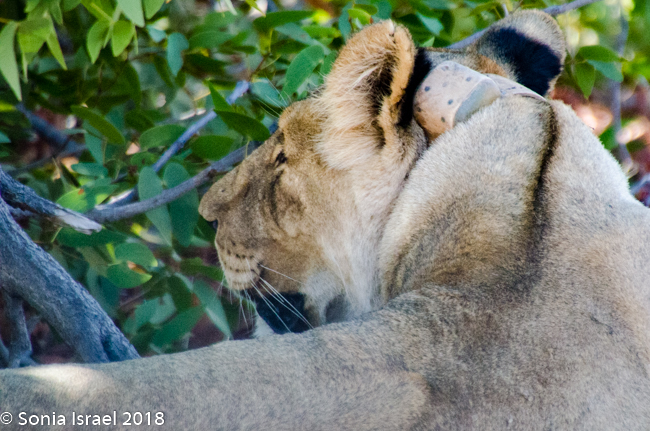 zation dedicated to conservation of the desert-adapted lions in Northern Namibia. The lions are tracked by a GPS collar, which we saw on the mother. To me it looked like a rather large collar, but she seemed to be used to it.
zation dedicated to conservation of the desert-adapted lions in Northern Namibia. The lions are tracked by a GPS collar, which we saw on the mother. To me it looked like a rather large collar, but she seemed to be used to it.
Searching for Desert Elephants
We finally left and headed east on the search for a desert elephant. We drove down the center of the dry river bed. We saw a beautiful rock kestrel (in the falcon family) in the tree. At times there was water with gorgeous reflections and we would drive up the bank, paralleling the river bed. There were carpets of yellow whiskers flowers. There were mustard bushes which made the air smell like mustard.
We saw Guinea Fowls, with their polka-dotted bodies and their red and blue heads. We saw two Gray Lourie with its crest on its head, with a call that sounding like they were saying, “go away.” They flew off, but then landed right back in the tree, posing for us.
The mud in the river bed, at points, was dry and all curled up. Charles taught us that the minerals in the mud dry at different rates which makes the mud curl. We saw a family of baboons but we didn’t stop. We were on a quest for elephants. We saw deep, elephant prints. But no elephant. We saw fields of little yellow flowers, called Devil’s horn or morning star. But no elephants. We continued our search until we had traveled so far and the river bed was too soft for us to safely continue. So we turned around and headed back west, defeated by the elements and the speed of the elephants.
- Dried up curled mud
- Elephant footprints
But this time, instead of having to create a new track, we could follow our own track back. Charles held his thumbs together, the equivalent of us crossing our fingers, for good luck. We didn’t find our elephant, but we didn’t get stuck in the mud either.
Baboons
We passed the baboon family again and this time stopped to watch them running around, babies on their mother’s backs, all of them sitting and eating the flowers. That part was particularly funny as they would sit on their back legs and use both hands to eat, hand to mouth, one hand after the other, as if they couldn’t get their food fast enough because they were starving and were afraid someone would take their food of flowers away. Unlike the lions, they did run away from us, so we tried to be very quiet and not park the car too close to them. Mostly they scattered about and scurried over the rocks, but never passing the flowers without grabbing a few.
Boys and their toys
As we continued our drive, we saw a car in the distance ahead of us. It was Gerhard and Ronnie, driving to check out a new resort that was being built. (As an a side, I learned that there is a Namibian law that states that when a new lodge opens, 95% of those hired must be from the local tribes.) Gerhard was driving right through the soft river bed, the mud flying everywhere. He was having fun. And why not?! There was no other car. It was just them and the river bed and the mud, with the blue sky and the brilliant sun. A great day for fun.
The Desert-Adapted Elephant Bull
And then, a bit further down the road, was our elephant. He was a huge bull covered in mud. The elephant is like a human in that it has knees on its back legs and breasts in front (not like other animals where the breasts are the back). His ear in not the big flap we see. There is a slit in front of the flap that is the ear. The flap is just to be able to cool off. The desert adapted elephant is thinner with wider feet. This elephant started walking away from us and Charles repositioned the car. He kept walking right to an Ana tree where he ignored us and set about eating the pods and rubbing himself against the tree.
Lunch
We drove on searching for a place in the shade to stop for lunch. We found a spot under the shade of the Ana tree, along the dry river bed. We made sure there were no elephants, no cheetahs (although I sure wanted to see one), no baboons, no giraffes. No one to bother us. Charles set up a table and we told him to forget the tablecloth and stay casual. But no, it was tablecloth and all. He set up a sink for us to wash our hands and we all sat down to eat along the river bed, under the trees. That was the day we had the delicious meatballs.
After lunch we headed back to camp. We stopped at the lodge for a swim in the salt water pool and drink some homemade sparkling lemonade to cool off and then headed to our campsite to rest a bit.
On the way back we saw our family of giraffes again. We saw an oryx waiting for us to pass the President’s Water Hole so he could approach and drink. And we made it back “home.” We needed to decide whether to just spend the late afternoon relaxing with a glass of wine or whether to go back out again to watch the lions, who should be waking up now. It was a close call. Relaxing sure sounded good. But how could I miss the chance to see the lions again. So Andy stayed back and relaxed and Charles and I went back out on our lion hunt.
Desert Lions, part 2 – The Stand Off
We had gone back and forth between the dry river bed so often that even I was beginning to recognize where we were and where we needed to go. I was beginning to understand how our guides always knew where they were going. We were not the only car out looking for the lions. Charles had mentioned the lions to some of the other guides at the lodge and so there were now three cars slowly making their way around the trees.
And then, we saw them up ahead. They were wide awake now, mother and daughter, but still lying under a tree. We watched them for quite awhile and the only sound amongst the stillness was the clicks of all the cameras. The pair slowly stood up and began to meander. The cars slowly followed. Where were they headed? What were they hunting for? We saw an oryx in the distance. Did the lions see it as well? Did the oryx sense the lions? These questions ran through my head. But the oryx was really far away, and he was wandering off in the opposite direction. He was not the pray – yet. The lions kept walking, slowly. Not like they were hunting. They weren’t trying to hide. They would walk a bit. Then lie down. Then get up and walk again. At one point the mother lion came over to her daughter and they sort of hugged, the way lions do. The mother put her head on her daughter and the just rubbed together. The light was perfect as the sun hit their backs. They were magnificently beautiful.
Charles decided to drive way ahead of them, and up onto the dune so we could look down at them. And from up there we saw the family of giraffes. And so did the lions. The two adult giraffes stood tall next to each other, and the babies stood perfectly 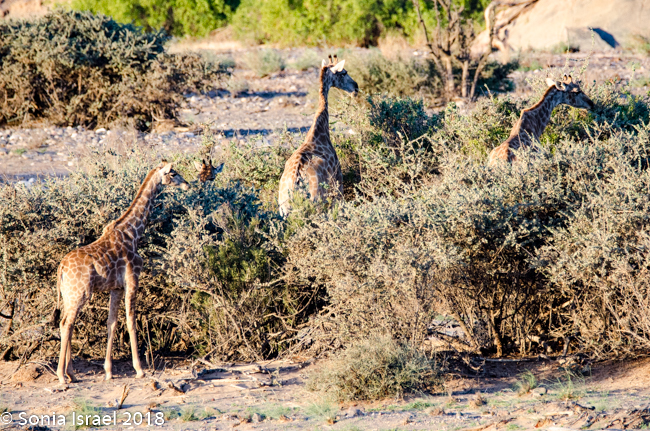 still behind them and behind some bushes, almost like the adults had said, “Stay right there. Don’t move.” At one point the baby moved and the mother giraffe turned to her as if to say, “I told you not to move.” She continued to stare at the baby while the other adult giraffe just stared the lion down. The lions just got down on all fours and stared right back at the giraffes. It was like a standoff. What would happen? Would my dream from last night come true? Would the lion get the baby giraffe? No, not today. Eventually everyone stood down. The giraffes wandered away and the lions continued on their evening constitutional. And we drove back to camp.
still behind them and behind some bushes, almost like the adults had said, “Stay right there. Don’t move.” At one point the baby moved and the mother giraffe turned to her as if to say, “I told you not to move.” She continued to stare at the baby while the other adult giraffe just stared the lion down. The lions just got down on all fours and stared right back at the giraffes. It was like a standoff. What would happen? Would my dream from last night come true? Would the lion get the baby giraffe? No, not today. Eventually everyone stood down. The giraffes wandered away and the lions continued on their evening constitutional. And we drove back to camp.
Dinner
Andy was relaxing by the campfire and I joined him. Gerhard poured some wine for us while he finished cooking dinner. The sun was setting, the fire throwing most of our light. The stars began to appear, twinkling above us. Dinner was served, and again, was spectacularly delicious. Beef marinated in red wine with herbs and marrow squash stuffed with sweet corn. Ronnie made pap, a type of traditional Herero food similar to polenta. And for dessert, vanilla ice cream with a drizzle of caramel sauce. Gerhard apologized that the ice cream was a bit melted, but it was just way I liked it. After dinner we brushed our teeth in our little sink and got ready for bed. But it wasn’t time to sleep just yet.
The Stars Up Above
On both nights I spent a long time shooting the stars. Since there was no artificial light at the campsite, absolutely none, we could see thousands and thousands of stars, including the milky way. Gerhard had a very strong green laser pointer which he used to point out the constellations. And I just shot and shot. And then I set the camera aside and just gazed at the sky. I felt like I was covered by a blanket of glistening diamonds. It was magnificent. It was humbling. It put life in perspective, reminding me that I am the speck in the universe.
- The moon

